Vered Neta's Blog, page 4
February 9, 2025
14 Movie Kisses That Defined Romance.
There’s something undeniably magical about a well-executed cinematic kiss. It can encapsulate longing, passion, heartbreak, or even triumph in a single moment. Few movies capture the power of the silver-screen kiss as poetically as Cinema Paradiso (1988).
In the film’s unforgettable ending, we see a montage of classic kisses from Hollywood’s Golden Age—moments once deemed too risqué for audiences but now recognized as cinematic treasures.
This tribute to romance in film reminds us of a great kiss’s impact on a story, an audience, and even pop culture itself.
And what better time to celebrate iconic kisses than on Valentine’s Day? Love and cinema have always gone hand in hand, giving us moments that make our hearts race, break, and soar.
Let’s take a journey through some of the most unforgettable on-screen kisses from the 1950s to today, and explore how changing cultural attitudes toward romance, gender dynamics, and sexuality have shaped the way love is portrayed on screen.
 #1 – Casablanca (1942) – “Here’s Looking at You, Kid”.
#1 – Casablanca (1942) – “Here’s Looking at You, Kid”.
Though technically from the 1940s, Casablanca’s iconic farewell kiss between Rick (Humphrey Bogart) and Ilsa (Ingrid Bergman) is too legendary to leave out.
As Rick and Ilsa part ways for the final time, their kiss isn’t just a goodbye—it’s a symbol of sacrifice, duty, and love that transcends everything else.
Amid the chaos of war and a world torn apart, this simple moment between them carries the weight of everything they’ve been through—years of passion, heartache, and an impossible love that was never meant to be.
It’s a bittersweet kiss, filled with unspoken words, as Rick lets Ilsa go, knowing that the greater good must come before his own desires. In that brief moment, you feel the entire heartbreak of a love story that could have been, yet will always linger in their hearts. It’s not just a kiss; it’s a timeless symbol of love’s power to endure, even when it’s forced to be left behind.
 #2 – From Here to Eternity (1953) – Passion on the Shore.
#2 – From Here to Eternity (1953) – Passion on the Shore.
Few movie kisses are as instantly recognizable as the one between Burt Lancaster and Deborah Kerr in From Here to Eternity. It is a bold, sizzling moment that remains one of the most unforgettable in film history.
As waves crash around them, their passionate embrace on the Hawaiian beach is a mix of desire and defiance, a love that refuses to be contained by social norms or the constraints of their respective marriages.
In an era where overt displays of passion were rare, this kiss broke all kinds of boundaries—it’s raw, it’s forbidden, and it’s undeniably powerful. The salty sea air and the crashing surf add to the intensity, making the kiss feel like a rebellion against everything holding them back.
It’s not just about the chemistry between them; it’s about a moment where love and desire can no longer be denied, even in the most public of places. This kiss is a perfect storm of emotion, passion, and raw need—impossible to forget and forever imprinted on the hearts of viewers.
 #3 – Breakfast at Tiffany’s (1961) – Kissing in the Rain.
#3 – Breakfast at Tiffany’s (1961) – Kissing in the Rain.
The final scene of Breakfast at Tiffany’s delivers a kiss that is as elegant as it is emotional.
After much uncertainty, Holly Golightly (Audrey Hepburn) finally allows herself to love Paul Varjak (George Peppard).
Their rain-soaked embrace, with the stray cat symbolizing their newfound connection, is a perfect mix of Hollywood glamour and heartfelt romance.

#4 – The Empire Strikes Back (1980) – “I Love You.” “I Know.”.
Sci-fi and romance don’t always go hand in hand, but Star Wars: The Empire Strikes Back proves otherwise.
The kiss between Han Solo (Harrison Ford) and Princess Leia (Carrie Fisher) is charged with tension and vulnerability.
As Han is about to be frozen in carbonite, Leia finally admits her love, and his legendary response—”I know”—cements this scene as one of the most effortlessly cool and emotionally impactful moments in cinematic history.

#5 – The Princess Bride (1987) – The Greatest Kiss of All Time.
The kiss at the end of The Princess Bride is the perfect culmination of the film’s fairy tale magic and witty charm.
As Wesley (Cary Elwes) and Buttercup’s (Robin Wright) love story reaches its epic conclusion, their kiss isn’t just a simple gesture—it’s a moment that encapsulates the entire essence of their journey. It’s passionate, full of triumph, and drenched in the warmth of everything they’ve overcome.
The narrator even dubs it “the greatest kiss of all time,” and with its blend of humor, heart, and unforgettable timing, it truly feels like the pinnacle of cinematic romance. It’s the kiss that proves, no matter the obstacles, true love conquers all—even if it’s in a slightly ironic, fantastical way!
 #6 – An Officer and a Gentleman (1982) – The Ultimate Grand Gesture.
#6 – An Officer and a Gentleman (1982) – The Ultimate Grand Gesture.
The kiss at the end of An Officer and a Gentleman is the ultimate wish-fulfilment moment—romantic, triumphant, and totally swoon-worthy.
When Zack (Richard Gere) strides into the factory in his crisp white uniform, sweeping Paula (Debra Winger) into his arms, it’s not just a kiss—it’s a grand declaration of love and victory.
As Joe Cocker and Jennifer Warnes’ Up Where We Belong swells in the background, the moment becomes pure cinematic magic. It’s the fantasy of being whisked away by love, of breaking free from a mundane life, and of getting the happy ending everyone dreams of.
No wonder this scene has been parodied, recreated, and referenced countless times—it’s romance at its most iconic.

#7 – Ghost (1990) – Love Beyond Death.
The kiss at the end of Ghost is one of the most bittersweet and transcendent moments in romantic cinema.
As Sam (Patrick Swayze) prepares to leave the mortal world, he shares one final kiss with Molly (Demi Moore)—but not in the way anyone expects.
With his spirit temporarily inhabiting Oda Mae Brown’s (Whoopi Goldberg) body, he finally gets to hold Molly one last time. As Unchained Melody plays softly in the background, their lips meet in a moment that is both heart-wrenching and deeply romantic.
When Sam finally ascends into the light, whispering “It’s amazing, Molly. The love inside… you take it with you,” the scene becomes something more than just a farewell kiss—it’s a testament to love’s ability to transcend time, space, and even death.
 #8 – Titanic (1997) – “I’m Flying!”
#8 – Titanic (1997) – “I’m Flying!”
The kiss in Titanic is the kind of sweeping, cinematic romance that feels larger than life—just like Jack (Leonardo DiCaprio) and Rose’s (Kate Winslet) love story itself.
Standing at the bow of the doomed ship, with the wind in their hair and the endless ocean stretching before them, Jack gently lifts Rose’s arms, whispering, “Do you trust me?”
When she answers yes, it’s not just about the moment—it’s about her surrendering to love, adventure, and a world beyond the one she’s always known.
As Celine Dion’s My Heart Will Go On swells in the background, they finally kiss, framed by the golden sunset, making it one of the most breathtakingly romantic moments in movie history. It’s a kiss that feels like freedom, passion, and the promise of a love that will never let go. No wonder this scene launched a thousand teenage daydreams and remains a pinnacle of cinematic romance.
 #9 – Spider-Man (2002) – The Upside-Down Kiss.
#9 – Spider-Man (2002) – The Upside-Down Kiss.
You wouldn’t associate superheroes with kisses and love. After all they are here to save the world.
But in this movie Superheroes had their moment in romance.
With Spiderman’s unforgettable upside-down kiss between Tobey Maguire and Kirsten Dunst.
With Spidey hanging in the rain, masked except for his lips, Mary Jane pulls down his mask just enough to kiss him. The scene’s mix of vulnerability and mystery made it one of the most innovative and visually striking kisses in film history.
 #10. Brokeback Mountain (2005) – Love Against the Odds.
#10. Brokeback Mountain (2005) – Love Against the Odds.
The 2000s marked an important shift in cinema, with LGBTQ+ love stories gaining more visibility.
The kiss in the tent in Brokeback Mountain is a moment of pure, unrestrained passion—the kind that changes everything.
As Ennis (Heath Ledger) and Jack (Jake Gyllenhaal) huddle against the cold Wyoming night, what starts as an unspoken tension suddenly explodes into a desperate, almost primal kiss. It’s rough, urgent, and fueled by years of longing neither of them fully understands yet.
There’s no hesitation, no second-guessing—just raw emotion and a connection that neither man can deny. In that instant, their lives are altered forever. It’s not just a kiss; it’s the birth of a love that will haunt them, define them, and ultimately break them.
 #11. The Notebook (2004) – The Rain-Soaked Reunion.
#11. The Notebook (2004) – The Rain-Soaked Reunion.
This list wouldn’t be complete without The Notebook’s iconic kiss. That rain-soaked kiss is the granddaddy of all dramatic, drenched-in-emotion smooches—because apparently, nothing says true love like making out while risking pneumonia.
After years of heartbreak and misunderstandings, Noah (Ryan Gosling) and Allie (Rachel McAdams) finally stop bickering long enough to realize they’ve been madly in love all along. And just in case their reunion wasn’t intense enough, Mother Nature cranks up the romance with a full downpour.
As Noah pulls Allie in for the kiss, it’s more than just passion—it’s years of longing, regret, and an unspoken apology for all the unnecessary drama. And when he tells her, “It wasn’t over. It still isn’t over,” well, neither is our collective obsession with this scene. Who knew torrential rain was the ultimate love potion?
 #12. La La Land (2016) – A Kiss in the Stars.
#12. La La Land (2016) – A Kiss in the Stars.
Damien Chazelle’s La La Land gave us a kiss straight out of a dream. The kiss in La La Land isn’t just romantic—it’s pure movie magic, literally.
As Mia (Emma Stone) and Sebastian (Ryan Gosling) twirl through the dreamy Planetarium sequence, gravity itself takes a backseat to love.
With the stars swirling around them, they lean in and share a kiss that feels weightless, timeless, and straight out of an old Hollywood fantasy. It’s not just a kiss—it’s the moment they step fully into their fairytale, where anything feels possible.
Of course, reality eventually comes knocking, but for now, they’re dancing on air, proving that sometimes love can make you feel like you’re floating—especially when a movie’s visual effects team gives you a little boost.
 #13. Call Me by Your Name (2017) – The Peach Orchard Kiss.
#13. Call Me by Your Name (2017) – The Peach Orchard Kiss.
As representation continued to evolve, Call Me by Your Name delivered a kiss between Elio (Timothée Chalamet) and Oliver (Armie Hammer) that felt deeply real and tender.
The kiss in Call Me by Your Name in the peach orchard is the kind of kiss that feels like the world slows down around you, leaving nothing but raw emotion in the heat of the Italian summer.
Elio and Oliver share a moment that’s hesitant, yet full of all the yearning that’s built up between them. It’s a kiss that speaks volumes without saying a word, a quiet confession of desire and confusion, set against the backdrop of a lush, sun-drenched orchard.
The soft, tender nature of it—like the ripening fruit around them—makes it feel like a fleeting moment of pure intimacy, where everything else fades away, and for just a second, they allow themselves to be fully consumed by each other. It’s a kiss that lingers long after it ends, as if the warmth of that summer will forever be tied to the ache of first love.
 #14. Portrait of a Lady on Fire (2019) – A Love That Burns.
#14. Portrait of a Lady on Fire (2019) – A Love That Burns.
The kiss in Portrait of a Lady on Fire is a slow burn, building up over time, and when it finally happens, it feels like an eruption of everything unspoken.
Set against the stunning backdrop of a secluded French island, the kiss between Héloïse (Adèle Haenel) and Marianne (Noémie Merlant) is full of tension, vulnerability, and a palpable sense of longing. It’s not just a kiss between two women; it’s a moment that speaks to a forbidden love, a love that exists not only between two people but also in the space between them, in the stolen glances and unspoken words.
This kiss represents more than just passion—it’s part of a larger cultural shift in cinema, one where the love and sexual attraction between women are no longer hidden or marginalized but celebrated with nuance and depth. In the new millennium, films like Portrait of a Lady on Fire have opened the door to more authentic and complex portrayals of queer relationships. This kiss, tender and intense, reflects a growing recognition that love, in all its forms, deserves to be seen in its full complexity.
It’s not just about desire; it’s about the quiet, powerful force of two people connecting in ways that defy social conventions and embrace intimacy as an art, a beautiful and often tragic act of self-discovery.
In Conclusion – From classic Hollywood romance to contemporary love stories, these kisses define their eras, their genres, and their cultural significance. Some are full of passion, some heartbreak, and some are simply pure magic. But all of them remind us why cinema has the power to make us feel deeply and dream bigger.
Now it’s YOUR turn – Which of these kisses is your favorite? Did I miss any iconic kisses?
Would love to get your input in the comment box below.
The post 14 Movie Kisses That Defined Romance. appeared first on Vered Neta.
February 2, 2025
Women in Cinema – From Sidekick to Superstar!
Next month, we’ll be celebrating International Women’s Day, a special occasion to reflect on how far we’ve come in terms of the representation of women in cinema. The role of female protagonists in film has undergone a profound transformation over the last four decades.
What was once a male-dominated arena is now more inclusive, diverse, and, dare I say, more exciting.
Women are no longer relegated to the background or reduced to mere love interests. They are leading, fighting, and winning on-screen, mirroring the shifts in societal perceptions of gender roles.
Sure, there’s still work to be done, but let’s take a moment to appreciate just how far we’ve come. Grab some popcorn, sit back, and join me as we explore seven key shifts in the portrayal of female protagonists in modern cinema!
7 Key Shifts in the Portrayal of Female Protagonists in Modern Cinema.

#1 – From Damsels in Distress to Action Heroes.
In the early days of cinema, women were often depicted as passive characters, merely waiting to be rescued by the heroic male lead.
Classic films like Breakfast at Tiffany’s (1961) and My Fair Lady (1964) featured female leads (both played by Audrey Hepburn) whose arcs revolved around their transformation under the guidance (and, sometimes, control) of men.
These roles were often sweet, but they rarely showed women as agents of their own fate.
In action films, women were frequently either the prize or the person in peril.
Take Miss Anders (Maud Adams) in The Man with the Golden Gun (1974) or Evelyn Mulwray (Faye Dunaway) in Chinatown (1974)—both characters were complex but ultimately powerless, their fates determined by the men around them.
However, by the late ‘80s and ‘90s, something began to shift. Women in action films began taking charge, reshaping the genre to feature independent heroines who could hold their own, and sometimes even outshine their male counterparts.
 One of the most iconic transformations came with Sarah Connor (Linda Hamilton) in The Terminator (1984), a character who started off as a victim but evolved into a fierce, resilient warrior by Terminator 2: Judgment Day (1991). Sarah’s transition from an ordinary woman to the leader of the human resistance became a defining moment in action cinema, symbolizing strength and resilience.
One of the most iconic transformations came with Sarah Connor (Linda Hamilton) in The Terminator (1984), a character who started off as a victim but evolved into a fierce, resilient warrior by Terminator 2: Judgment Day (1991). Sarah’s transition from an ordinary woman to the leader of the human resistance became a defining moment in action cinema, symbolizing strength and resilience.
Then there’s Ellen Ripley (Sigourney Weaver) in Aliens (1986), who broke through gender norms by leading a group of Marines in a deadly battle against extraterrestrials. Ripley wasn’t just an action hero—she was a mother, a survivor, and an emotionally rich character whose leadership qualities made her unforgettable.
Fast forward to Katniss Everdeen (Jennifer Lawrence) in The Hunger Games (2012), who leads a rebellion against a dystopian regime. Unlike many previous male-led dystopian films, Katniss’s survival is rooted in emotional intelligence, compassion, and resilience, rather than brute force. Her story marked a shift in how we saw heroines: they could be vulnerable and strong at the same time.
 #2 – Beyond the Love Interest – Women with Their Own Journeys.
#2 – Beyond the Love Interest – Women with Their Own Journeys.
For decades, women in films were primarily defined by their relationship to the male protagonist.
They were often romantic interests, their stories serving to advance the plotlines of the men.
Take Marion Ravenwood (Karen Allen) in Raiders of the Lost Ark (1981), a character with incredible strength but whose arc ultimately revolves around Indiana Jones. Similarly, Holly Goodhead (Lois Chiles) in Moonraker (1979) may have been a capable CIA agent, but she took a backseat to James Bond’s heroics.
The 1990s and beyond brought a new wave of films where female protagonists pursued their own goals—often independent of any romantic subplot.

Thelma and Louise (1991), starring Susan Sarandon and Geena Davis, became a feminist landmark for its portrayal of two women on a journey of self-liberation. The film flipped the script on the traditional portrayal of women by showing them seek freedom and adventure rather than validation from men. Their road trip wasn’t just about running away—it was about reclaiming their agency and finding freedom on their own terms.
In Erin Brockovich (2000), Julia Roberts brought to life the true story of a legal assistant who takes on a major corporation in a fight for environmental justice. The film’s focus was on Erin’s intelligence, tenacity, and personal integrity, with her romantic life relegated to a subplot rather than the primary storyline.
More recently, Furiosa (Charlize Theron) in Mad Max: Fury Road (2015) proved that a woman could be the central figure in an action-packed narrative without being a love interest. Furiosa is a battle-hardened leader on a mission for freedom and justice, taking her place as one of cinema’s most iconic female heroes. Her strength and leadership abilities redefined the action genre, challenging the notion that a male hero should always be the star.

#3 – 3. More Complex and Flawed Female Characters.
For far too long, female characters in films were either perfect paragons of virtue or dangerously villainous.
Think of the sweet, innocent heroine, like Dorothy Gale (Judy Garland) from The Wizard of Oz (1939).
Or the femme fatale (like Barbara Stanwyck’s character in Double Indemnity (1944)).
But things have shifted, and one of the most exciting developments in film is the rise of the complex, flawed female protagonist.
Enter Cersei Lannister (Lena Headey) from Game of Thrones (2011-2019), one of the most iconic antiheroines in television history. She’s ambitious, manipulative, and ruthless, willing to do anything—including betrayal and murder—to protect her children and claim power. While Cersei is undeniably a villain, her motivations are deeply human, born out of a desire for survival in a world where men dominate and power is the ultimate currency.
 Similarly, Amy Dunne (Rosamund Pike) in Gone Girl (2014) is a master manipulator, providing a chilling portrayal of a woman who defies expectations of female victimhood. Rather than being the damsel in distress, Amy is the one pulling the strings in a twisted, dark narrative about love, betrayal, and the media.
Similarly, Amy Dunne (Rosamund Pike) in Gone Girl (2014) is a master manipulator, providing a chilling portrayal of a woman who defies expectations of female victimhood. Rather than being the damsel in distress, Amy is the one pulling the strings in a twisted, dark narrative about love, betrayal, and the media.
Then there’s Harley Quinn (Margot Robbie) in Birds of Prey (2020), a chaotic, unpredictable antihero who is far more than just a sidekick to the Joker. Harley is a mess of contradictions—vulnerable, hilarious, and downright dangerous—but her character, both funny and tragic, offers a fresh perspective on female characters who exist outside of traditional norms.
 #4 – Female Leads in Traditionally Male-Dominated Genres.
#4 – Female Leads in Traditionally Male-Dominated Genres.
For much of Hollywood’s history, women were largely sidelined in genres like sci-fi, fantasy, and thrillers.
Though there were strong female characters, like Princess Leia (Carrie Fisher) in Star Wars (1977), they often played secondary roles to male protagonists.
But in the 21st century, women have taken center stage in these traditionally male-dominated genres, showing that there’s no limit to what they can do.
 The Matrix (1999) introduced Trinity (Carrie-Anne Moss), a character who shattered stereotypes of the passive female. She was a highly skilled fighter and an intellectual equal to Neo, proving that women could thrive in action-packed, mind-bending narratives.
The Matrix (1999) introduced Trinity (Carrie-Anne Moss), a character who shattered stereotypes of the passive female. She was a highly skilled fighter and an intellectual equal to Neo, proving that women could thrive in action-packed, mind-bending narratives.
In Star Wars: The Force Awakens (2015), Rey (Daisy Ridley) became the central hero of the franchise, offering a fresh perspective on the Force. Rather than relying on legacy or lineage, Rey’s journey is one of personal growth, marking a new era for female leads in the Star Wars universe.
Shuri (Letitia Wright) in Black Panther (2018) is another standout character. As a tech genius and a key figure in Wakanda’s success, Shuri brought intelligence and innovation to the superhero genre, proving that brains were just as important as brawn. Her wit and brilliance made her one of the most compelling characters in the Marvel Cinematic Universe.

#5 – The Rise of Intersectionality – More Diverse Female Leads.
In the past, women of color were largely relegated to secondary roles, often typecast or stereotyped.
Today, however, female protagonists are becoming increasingly diverse, reflecting a broader range of experiences, identities, and cultures. And that’s a change worth celebrating.
Selina Kyle/Catwoman (Zoë Kravitz) in The Batman (2022) offered a fresh take on an iconic character, introducing racial diversity into the superhero world without reducing her to a stereotype. She was a complex, compelling character who stood as an equal to the male heroes of Gotham.
In Moana (2016), Disney introduced a Pacific Islander heroine who embarks on a hero’s journey—not for love, but for self-discovery. Moana challenges traditional narratives of female characters by being an adventurous leader who doesn’t need a romantic subplot to validate her.
And let’s not forget Everything Everywhere All at Once (2022), where Michelle Yeoh delivered a powerhouse performance as a woman navigating multiversal chaos. Yeoh’s character, an older Asian woman, broke boundaries in an industry that often sidelines both older actors and Asian leads. The film’s immense success proves the demand for diverse, authentic storytelling is more alive than ever.

#6 – Redefining Femininity – Challenging Traditional Gender Norms.
Gone are the days when femininity was confined to nurturing roles or passivity.
While classic films like Pillow Talk (1959) and The Stepford Wives (1975) reflected outdated notions of femininity, today’s cinema is full of women who break those stereotypes wide open.
Take Wonder Woman (2017), for example, where Gal Gadot’s portrayal of Diana challenges the traditional depiction of women. Diana is a fierce warrior, yes, but she’s also a compassionate leader. She proves that women can be both powerful and empathetic, both fierce and kind.
 In Molly’s Game (2017), Jessica Chastain’s character Molly Bloom defies gender expectations in the cutthroat world of underground poker. Rather than being passive or “feminine” in the traditional sense, Molly is sharp, determined, and unapologetically ambitious, showing that women can thrive in high-stakes, male-dominated environments.
In Molly’s Game (2017), Jessica Chastain’s character Molly Bloom defies gender expectations in the cutthroat world of underground poker. Rather than being passive or “feminine” in the traditional sense, Molly is sharp, determined, and unapologetically ambitious, showing that women can thrive in high-stakes, male-dominated environments.
And in Lady Bird (2017), Saoirse Ronan’s character challenges traditional femininity by being a complex, independent young woman navigating the uncertainties of growing up. She’s neither a nurturing figure nor a romantic lead—she’s a young woman learning who she is, outside of societal expectations.
#7 – The Rise of Female Protagonists Who Embrace Unconventional Roles.
Finally, we’re seeing more women step into roles that defy convention—embracing their agency, independence, and complexity in ways that were previously rare in film.
 In Hustlers (2019), Jennifer Lopez’s character Ramona leads a group of strippers who take matters into their own hands, scheming to rob wealthy men. Far from being passive victims, these women are resourceful, intelligent, and empowered, showing that even those who are marginalized in society can take control of their destinies.
In Hustlers (2019), Jennifer Lopez’s character Ramona leads a group of strippers who take matters into their own hands, scheming to rob wealthy men. Far from being passive victims, these women are resourceful, intelligent, and empowered, showing that even those who are marginalized in society can take control of their destinies.
In Frances Ha (2012), Greta Gerwig’s character Frances is an aspiring dancer in New York City who doesn’t conform to the usual narrative of the successful, driven protagonist. Instead, she’s awkward, struggling, and imperfect—yet her journey toward self-acceptance is a refreshing departure from the traditional “perfect heroine” trope.
And then there’s Marge Gunderson (Frances McDormand) in Fargo (1996), a pregnant police chief who solves a crime not through aggression but through intelligence, patience, and moral clarity. She proves that strength doesn’t always have to look like toughness.
In Conclusion – As we celebrate International Women’s Day, it’s important to recognize how far we’ve come in cinematic representation.
Women have gone from being background players to the driving force behind some of cinema’s most dynamic and unforgettable stories. The evolution of female protagonists not only reflects broader societal shifts but also signals the exciting possibilities that lie ahead.
The future of female protagonists is more diverse, dynamic, and empowering than ever—and that’s something worth celebrating.
Now it’s YOUR turn – Which female character from film or TV has inspired you the most?
Would love to get your input in the comment box below.
The post Women in Cinema – From Sidekick to Superstar! appeared first on Vered Neta.
January 26, 2025
Crafting Powerful Biopics – 7 Essential Elements.
Biographical films have this special kind of magic—they take real lives, real stories, and turn them into cinematic gold. But here’s the twist: filmmakers have to strike that perfect balance between staying true to history and adding a little dramatic flair.
Sure, we want to see the authentic story unfold, but we also want that movie magic that only a well-crafted narrative can provide. A great biopic nails this balance, transforming someone’s life into a captivating, larger-than-life experience.
So, how do filmmakers pull off this tricky feat? With the release of Maria by Pablo Larrain, now’s the perfect time to dive into how filmmakers blend realism with fiction in biographical films.
7 Essential Elements in Crafting Powerful Biopics.
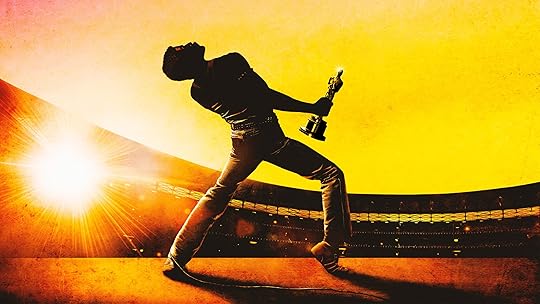
#1 – Ground the Story in Core Truths.
At the heart of every successful biographical narrative is the undeniable truth of the person’s life. This is the bedrock that holds everything together, from the key moments to the emotional struggles.
While no story can be completely accurate (because let’s be honest, real life doesn’t always follow a perfect plot arc), the core truth is what anchors the film. It’s not about cramming every single detail in; it’s about focusing on the defining moments that shaped the person’s journey.
Take Bohemian Rhapsody, for example. The film doesn’t follow the exact chronology of Freddie Mercury’s life, but it captures the essence of his explosive rise to fame, his struggle with identity, and his deep connection to music.
The filmmakers focused on the core truths: his undeniable talent and his inner conflicts. Even though they rearranged some events, like the famous Live Aid performance, they stayed true to Mercury’s larger-than-life persona. That’s the magic of grounding a film in core truths—you keep the spirit of the subject alive, even if the details get a creative makeover.
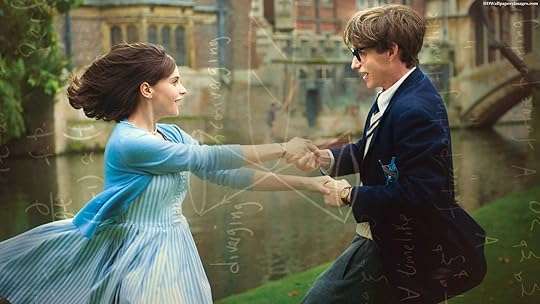 #2 – Embrace Fiction to Enhance Emotion.
#2 – Embrace Fiction to Enhance Emotion.
Now, let’s get real: sometimes reality just doesn’t have the emotional punches we want on screen. Real-life conversations can be dry, and sometimes, the big moments feel flat without a little creative spin.
That’s where fiction comes in! Adding a touch of drama where the historical record falls short can enhance the emotional core of the story.
Think about The Theory of Everything. While it sticks fairly close to Stephen Hawking’s remarkable journey, some personal moments were fictionalized, especially his relationship with Jane Hawking.
But that extra emotional oomph—the scene where Jane reads Stephen’s speech aloud as he listens—isn’t just added for effect. It deepens their bond and highlights Jane’s unwavering support, capturing the essence of their relationship without needing to stick to the exact events. Sure, it might not have happened exactly like that, but it feels truthful, and that’s what counts.
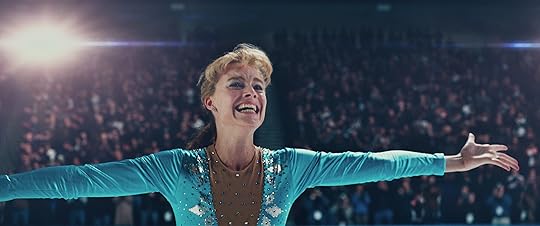
#3 – Avoid Turning Characters into Caricatures.
Biographical films often feature people who are legends in their own right, but turning them into exaggerated caricatures doesn’t do justice to their complexities.
It’s tempting to amp up the drama for the sake of a good story, but doing so can reduce an iconic figure to a simple trope. Instead, filmmakers should focus on making characters feel real—flaws, contradictions, and all.
Even though I, Tonya can be seen as a parody it is a prime example of how to walk that fine line. The film could’ve easily turned Tonya Harding into a flat-out villain or the victim of her circumstances.
But instead, it shows her as a multidimensional character. She’s vulnerable, volatile, ambitious, and sometimes downright hard to sympathize with, but by exploring her complexities, we see her as a real person rather than a mere stereotype. Her upbringing, struggles with class, and public perception are all explored with nuance, turning what could’ve been a simple scandal story into a deeply human portrait.
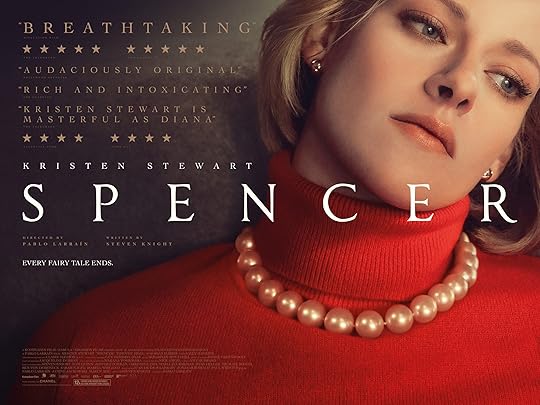 #4 – Be Thoughtful with Symbolism and Metaphor.
#4 – Be Thoughtful with Symbolism and Metaphor.
Symbolism is like seasoning—just the right amount can add depth, but too much can leave a bad taste in your mouth.
When it comes to biographical films, too much metaphor can easily feel like overkill, distracting from the real, raw story.
But when used carefully, symbolism can elevate the narrative and give it layers of meaning.
In Spencer, the pearl necklace serves as a powerful symbol of Princess Diana’s suffocating life within the royal family.
It’s a subtle yet striking metaphor that captures her internal conflict without overshadowing the narrative. When Diana imagines the necklace breaking while she’s eating soup, it’s a moment that perfectly encapsulates her desire to escape the stifling royal constraints.
This kind of thoughtful symbolism doesn’t detract from the realism of the film; it enriches it by providing an emotional anchor that deepens our connection to the character.

#5 – Stay Honest About What’s Fictionalized.
One of the most important lessons for filmmakers is transparency. The last thing anyone wants is to feel misled by a biographical film, so honesty is key.
While some dramatic embellishments are inevitable (after all, movies need a bit of pizzazz), acknowledging when a filmmaker has taken creative liberties helps the audience stay grounded in reality.
Take Blonde, for instance. This fictionalized retelling of Marilyn Monroe’s life is based on Joyce Carol Oates’ novel, and the filmmakers made sure to present it as such. By clearly positioning the film as a work of fiction, they allowed audiences to enjoy it for its artistic interpretation rather than for a literal biography.
On the other hand, Rocketman fully embraced its fantasy elements, transforming Elton John’s life story into a musical odyssey. Both films made their intentions clear, and audiences knew what to expect, allowing them to engage with the story in the way it was intended.
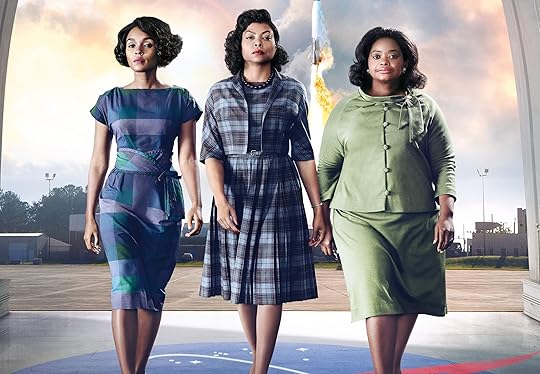
#6 – Embody the Spirit of the Time.
Biographical films are as much about the time and place as they are about the individual. The cultural and historical context plays a huge role in shaping the subject’s life, so capturing that spirit is essential.
It’s not just about getting the fashion right (though let’s be honest, the costumes can be a huge part of the fun!), but also about reflecting the attitudes, norms, and political climate of the era.
Selma is an excellent example of how to capture the zeitgeist. The film takes us right into the heart of the 1960s Civil Rights Movement, giving us a sense of the tension and urgency of the time. The attention to period details—from the tension-filled marches to the powerful speeches—creates an immersive experience that lets us understand the societal forces shaping Dr. Martin Luther King Jr.’s leadership.
Similarly, Hidden Figures doesn’t just tell the stories of three remarkable women at NASA—it also highlights the racial and gender discrimination they faced in the 1960s, capturing the social landscape that influenced their struggles and triumphs.
 #7 –
Craft a Narrative Arc Without Losing Authenticity.
#7 –
Craft a Narrative Arc Without Losing Authenticity.
Here’s the thing: real lives aren’t always neat. They don’t always follow the perfect three-act structure that Hollywood loves.
But films need structure to keep audiences engaged. The trick is to craft a narrative arc that stays true to the essence of the subject’s life without losing the authenticity of the real events.
King Richard is a great example of how to balance structure with truth. The film condenses Richard Williams’ story to focus on his determination to train Venus and Serena Williams. While the timeline is simplified, the film stays true to the emotional core of Richard’s belief in his daughters’ potential.
It’s a story of relentless vision and love, and while some events were condensed or altered for narrative flow, the heart of the film remains authentic to the real-life person it’s portraying.
In Conclusion – Creating a biographical film is an art. It’s about blending reality with creativity, facts with emotions, and truth with storytelling. By grounding the film in the core truths of the subject’s life, embracing fiction to enhance emotion, avoiding caricatures, using symbolism sparingly, staying honest about what’s fictionalized, capturing the zeitgeist, and crafting a compelling narrative arc, filmmakers can bring real-life stories to the big screen in a way that feels both authentic and entertaining.
The best biopics don’t just tell you about someone’s life—they make you feel it. And that’s what makes them unforgettable.
Now it’s YOUR turn – What’s one real-life story you’d love to see turned into a biographical film? How would you want it told
Would love to get your input in the comment box below.
The post Crafting Powerful Biopics – 7 Essential Elements. appeared first on Vered Neta.
January 20, 2025
How Culture Shapes Characters.
Let’s be real: when it comes to creating unforgettable characters, the magic often lies in the details—those little quirks, beliefs, and behaviors that make us feel like we’re peeking into someone’s real life. And what better way to add depth and authenticity than by diving into their cultural heritage? It’s like giving your characters roots that anchor them in a world of traditions, values, and history.
For the longest time, storytelling—especially in Hollywood and Western literature—focused on white, Western cultures. But as the 21st century unfolded and the call for diversity got louder (finally!), we’ve been treated to a treasure trove of characters and stories that celebrate a kaleidoscope of cultures. And honestly, it’s about time.
Let’s explore how cultural heritage plays a starring role in character development.
5 Ways Cultural Heritage Plays a Role in Character Development.[image error]#1 – Shaping Identity and Worldview.
Cultural heritage is like a pair of glasses through which characters see the world. It influences their choices, dreams, and even their arguments at family dinners.
For example, in Crazy Rich Asians , Rachel Chu’s American upbringing clashes spectacularly with Nick Young’s traditional Chinese-Singaporean family values. Her journey to understand Nick’s world—and her place in it—makes her character’s arc so much richer.
Plus, who didn’t love Eleanor Young’s (Michelle Yeoh’s) iconic mahjong showdown scene? Talk about cultural heritage driving a narrative moment!
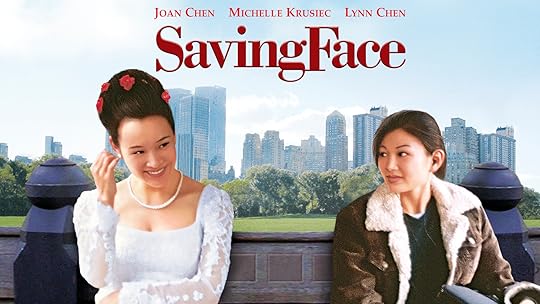 Another example is Saving Face, a heartwarming and hilarious rom-com about Wilhelmina (Wil) Pang, a young Chinese-American surgeon navigating love and family expectations. Wil’s struggle to come out to her traditional mother while maintaining her cultural ties adds layers of complexity and relatability to her character. It’s a beautiful (and funny!) reminder that cultural heritage can be both a source of conflict and connection.
Another example is Saving Face, a heartwarming and hilarious rom-com about Wilhelmina (Wil) Pang, a young Chinese-American surgeon navigating love and family expectations. Wil’s struggle to come out to her traditional mother while maintaining her cultural ties adds layers of complexity and relatability to her character. It’s a beautiful (and funny!) reminder that cultural heritage can be both a source of conflict and connection.
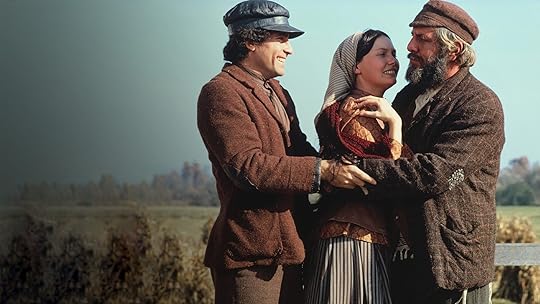 #2 – Exploring Conflict Through Heritage.
#2 – Exploring Conflict Through Heritage.
Speaking of conflict, cultural heritage is a goldmine for drama. Generational clashes, anyone? This isn’t a new trick—think of classic movies like Fiddler on the Roof, where Tevye’s daughters push against Jewish traditions in their quest for love, or Rebel Without a Cause, which pits Jim Stark against the rigid social expectations of his time. These stories show us that cultural conflict is timeless and endlessly compelling.
In more recent times, The Joy Luck Club by Amy Tan explores the tensions between immigrant mothers and their American-born daughters, who are constantly butting heads over values, traditions, and even who’s hosting dinner.
These conflicts aren’t just juicy plot points—they’re windows into how cultural heritage shapes identity and relationships. And let’s be real, who hasn’t had an argument with their parents over something as simple as “Why don’t you call your aunt more often?”
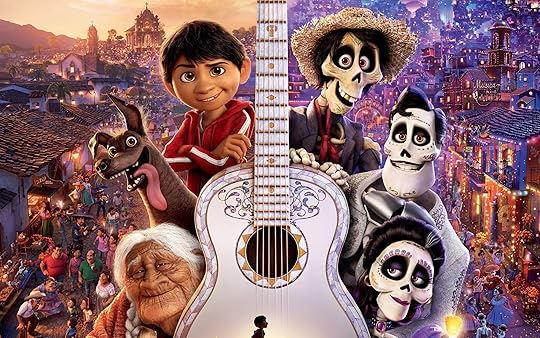 Pixar’s Coco takes this to another level. Miguel’s dream of becoming a musician hits a wall—a big, family-sized wall—when his relatives forbid music because of an old family wound. His journey through the Land of the Dead is not just about chasing his dreams; it’s about understanding and healing his family’s history.
Pixar’s Coco takes this to another level. Miguel’s dream of becoming a musician hits a wall—a big, family-sized wall—when his relatives forbid music because of an old family wound. His journey through the Land of the Dead is not just about chasing his dreams; it’s about understanding and healing his family’s history.
The movie’s celebration of Mexican culture—from its stunning portrayal of Día de los Muertos to its heartfelt exploration of family legacy—makes Miguel’s story universally relatable yet uniquely his own.
There’s no one-size-fits-all when it comes to character arcs, but most arcs fit into three broad categories. Let’s explore them, shall we?
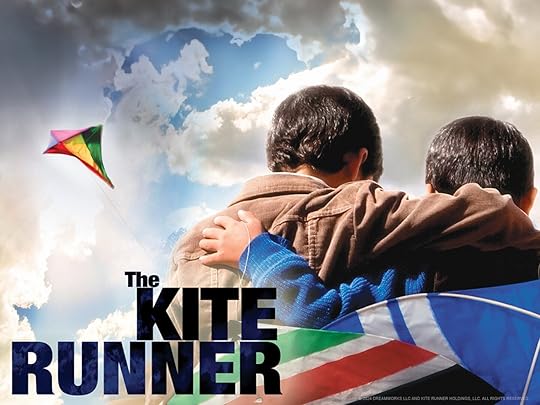 #3 – Adding Authenticity and Specificity.
#3 – Adding Authenticity and Specificity.
Let’s face it: a character without cultural heritage can feel a bit… generic. But when you ground a character in their cultural background, they come alive.
Take The Kite Runner by Khaled Hosseini. Amir and Hassan’s lives are steeped in Afghan culture, from kite-flying competitions to the social divides dictated by ethnicity and religion. These cultural elements don’t just set the scene; they define who these characters are and why they make the choices they do.
On-screen, Black Panther did something similar but on a massive scale. Wakanda’s culture—rooted in African traditions with a futuristic twist—isn’t just a backdrop; it’s the heartbeat of the story. T’Challa’s struggle between isolationism and global responsibility mirrors real-world debates within the African diaspora. And let’s not forget Shuri’s tech-savvy genius, which blends tradition with innovation. Wakanda forever, indeed!
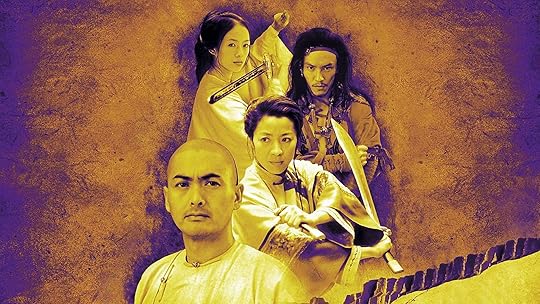 #4 – Highlighting Universal Themes.
#4 – Highlighting Universal Themes.
Cultural heritage doesn’t just make characters unique; it’s also a lens for exploring universal themes like love, loss, and belonging.
In Pachinko by Min Jin Lee, the multi-generational saga of a Korean family in Japan delves into themes of identity and resilience.
Sunja’s sacrifices and struggles are deeply tied to her cultural roots, making her journey both specific and universally resonant.
By the end, you’re left thinking about what it means to belong—to a family, a culture, or even a place.
Let’s not forget Crouching Tiger, Hidden Dragon. The film’s characters grapple with honor, love, and duty—all through the lens of Chinese cultural values. The breathtaking wuxia scenes are more than just visually stunning; they’re a poetic reflection of the characters’ internal conflicts. It’s a reminder that cultural heritage can be as much about philosophy and storytelling as it is about rituals and traditions.
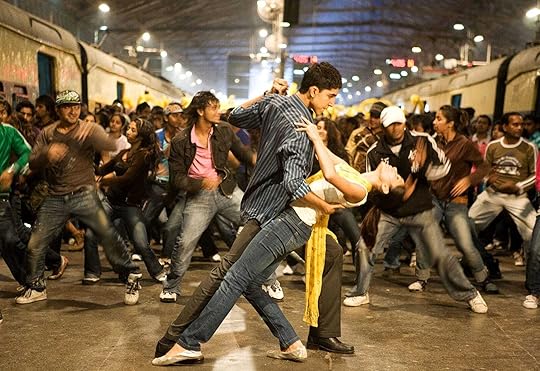 #5 – Fostering Empathy and Understanding.
#5 – Fostering Empathy and Understanding.
One of the best things about diverse stories is how they invite us to walk in someone else’s shoes. Cultural heritage helps us do just that.
In Slumdog Millionaire, Jamal’s life in the slums of Mumbai shapes everything about him—his resourcefulness, his morality, and even his answers on a game show. The film’s vibrant depiction of Indian culture immerses us in his world, fostering empathy for his struggles and admiration for his resilience.
Or take Minari, the tender story of a Korean-American family trying to build a life on a farm in Arkansas. The film’s exploration of cultural heritage—from the grandmother’s traditional remedies to the challenges of fitting into a new community—gives the characters depth and humanity. It’s a poignant reminder that cultural heritage is both a burden and a blessing.
Tips for Writers and Filmmakers.If you’re itching to infuse your characters with cultural heritage, here are some tips to keep it real (and awesome):
Research Like a Pro – Authenticity matters. If you’re exploring a culture that’s not your own, dive deep. Read books, watch films, and talk to people who know it firsthand.Let It Flow Naturally – Don’t make cultural heritage feel like a history lesson. Show it through everyday moments—a festival, a meal, a family tradition.
Ditch the Stereotypes – Cultures are rich and diverse. Avoid reducing them to clichés or tropes. Give your characters nuance and depth.
Use It for Conflict and Growth – How does your character’s heritage shape their struggles or relationships? Maybe they’re torn between tradition and ambition, or they’re learning to embrace their roots.
Celebrate the Specifics: The more specific your character’s cultural heritage, the more relatable they become. Details make all the difference.
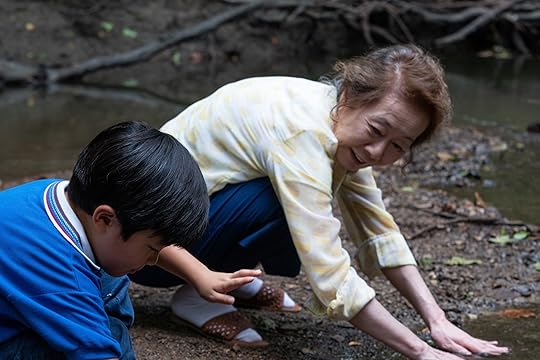 In Conclusion – Cultural heritage is more than just a backdrop—it’s a treasure trove of stories waiting to be told. From the glitz of Crazy Rich Asians to the heartfelt struggles in Minari, characters grounded in cultural heritage feel real, relatable, and unforgettable.
In Conclusion – Cultural heritage is more than just a backdrop—it’s a treasure trove of stories waiting to be told. From the glitz of Crazy Rich Asians to the heartfelt struggles in Minari, characters grounded in cultural heritage feel real, relatable, and unforgettable.
Plus, these stories remind us that while we all come from different places, the themes of love, identity, and belonging connect us all.
So, the next time you’re crafting a character, ask yourself: What’s their story? What traditions, values, or histories shape their world? Chances are, those answers will lead you to a tale that not only entertains but also inspires.
Now it’s YOUR turn – What’s your favourite cultural heritage story?
Would love to get your input in the comment box below.
The post How Culture Shapes Characters. appeared first on Vered Neta.
December 12, 2024
The Power of Character Arcs – From Flaws to Triumphs.
Ever been glued to a screen, cheering for a character like they’re your best friend, or shaking your head like, “No, don’t do it!”? That’s the magic of a great character arc.
Watching a character grow, evolve, or self-destruct is one of the most satisfying parts of storytelling—it’s what makes a good movie or show stick with us long after we’ve finished the popcorn.
So, let’s dive into character arcs: the good, the bad, and the omg-what-just-happened.
Wait, What’s a Character Arc?Imagine a character going through a personal makeover, but instead of a shiny new wardrobe, they’re changing on the inside. That’s a character arc!
It’s the journey a character takes—from where they start, to what shakes them up, and how they end up by the final scene. Sometimes they grow into better versions of themselves (yay!), sometimes they spiral into darkness (oh no!), and sometimes they stay the same but change the world around them (boss move).
A killer character arc makes a story unforgettable. Without it? You’re left with flat, boring characters, and nobody has time for that.
The Big Three Types of Character Arcs.There’s no one-size-fits-all when it comes to character arcs, but most arcs fit into three broad categories. Let’s explore them, shall we?
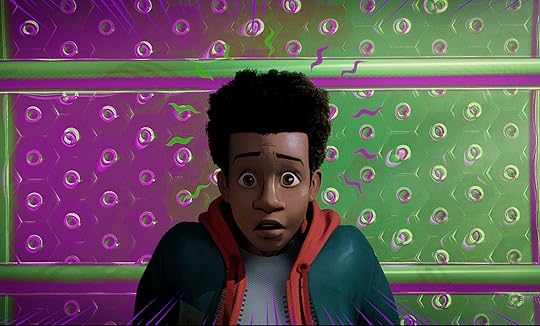 #1 – The Glow-Up Arc (Positive Arc).
#1 – The Glow-Up Arc (Positive Arc).
Ah, the classic glow-up! This is your typical Hero’s Journey, feel-good arc where the character starts off flawed or uncertain, but by the end, they’re conquering their fears and becoming their best self. Think of it as a transformation where we can’t help but cheer them on as they become the hero we always knew they could be.
Take Miles Morales in Spider-Man: Into the Spider-Verse. He’s a teenager just trying to find his place in the world, unsure of his powers and overwhelmed by his new responsibilities. But by the end of the movie? He’s literally rocking his own Spidey suit and saving the multiverse! The arc shows a young man finding his courage, embracing his powers, and stepping up to a challenge bigger than he ever imagined. It’s the ultimate glow-up!
Why we love it: Watching someone rise to the challenge reminds us that, hey, maybe we can handle our own messes too. We see them grow and learn—and if they can do it, maybe we can too.
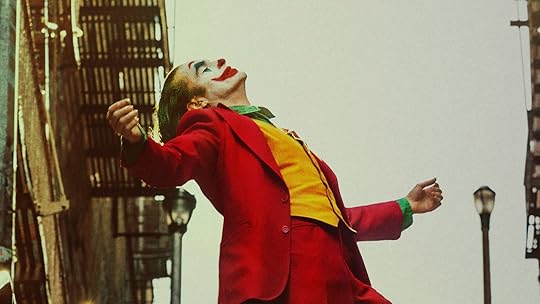 #2 – The Downward Spiral (Negative Arc).
#2 – The Downward Spiral (Negative Arc).
Not every story has a happy ending. In fact, some arcs dive straight into a downward spiral. In these stories, the character makes all the wrong choices, gives in to their darker instincts, and spirals into tragedy. These arcs can be heartbreaking but totally compelling, keeping us glued to the screen to watch what happens next.
Arthur Fleck in Joker is a haunting example of a downward spiral. Arthur starts as a struggling comedian, a man rejected by society and battling mental illness. All he wants is to make people laugh, to be loved, and to feel seen. But the cruelty and neglect he faces in Gotham push him to the brink. As his mind unravels, Arthur transforms into the chaotic, violent Joker, embracing the very madness that once tormented him.
Why we can’t look away: Arthur’s arc isn’t just about one man’s fall—it’s a chilling commentary on the cracks in society and how neglect and marginalization can create monsters. Watching his descent into madness feels like a warning, and it’s both tragic and terrifying to witness.
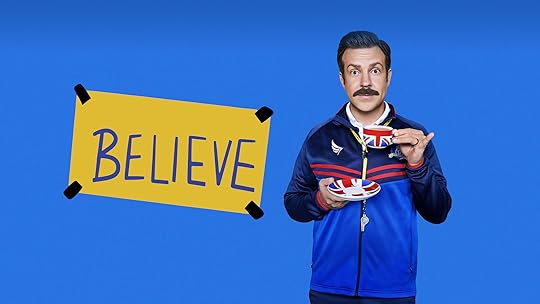 #3 – The Steady Rock (Flat Arc).
#3 – The Steady Rock (Flat Arc).
Not every character arc involves massive internal change. Sometimes, the character stays essentially the same—steadfast and strong in their beliefs. Instead of evolving, these characters inspire those around them to change. These are the heroes who walk into a room and make everyone else rethink their life choices.
Ted Lasso in Ted Lasso is the ultimate example of this type of arc. Ted doesn’t change much throughout the series—he’s still the same relentlessly positive, kind, and goofy guy who believes in people’s potential. However, his unwavering optimism completely transforms the AFC Richmond football team, shifting the culture and the hearts of everyone around him.
Why it works: Ted shows us that you don’t always need to change yourself to make a difference. Sometimes, just sticking to your values and being a good, empathetic person can inspire massive change. Plus, who doesn’t love a mustached, football-coaching ball of joy?
The Three Stages of a Great Arc.So, how do these arcs actually play out? Well, no matter what type of arc we’re dealing with, every character journey follows three key stages: the Starting Line, the Messy Middle, and the Finish Line.
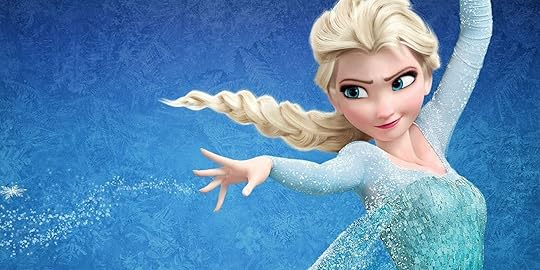 #1. The Starting Line – Flaws and Conflicts.
#1. The Starting Line – Flaws and Conflicts.
Every great arc begins with a character who’s either flawed, stuck, or facing a big challenge. This is where we meet them and think, “Hmm, they’ve got some work to do.” But it’s also what makes their transformation so satisfying.
In Frozen, Elsa starts off as a woman so consumed by fear that she isolates herself from her sister and the world. Her childhood trauma—accidentally hurting Anna with her powers—leaves her afraid of her own emotions. Her flaw is clear: She believes the only way to protect others is to shut herself off entirely. Cue the beginning of her incredible transformation.
Why it works: Elsa’s struggle is one we can all relate to. Who hasn’t felt like we had to hide part of ourselves because we were afraid it might hurt someone else? We immediately connect with her fear, and that hooks us into her journey.
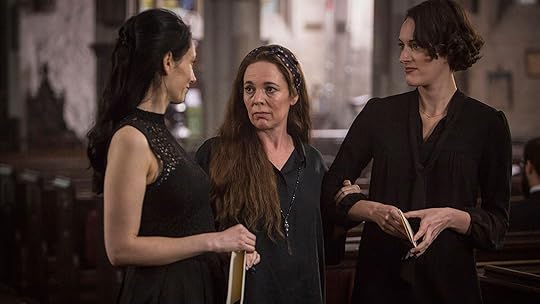 2. The Messy Middle – Challenges and Growth.
2. The Messy Middle – Challenges and Growth.
Ah, the messy middle. This is where the good stuff happens. The character faces obstacles that challenge their beliefs and force them to grow—or, if they’re heading for a negative arc, pull them further into their flaws.
Fleabag offers a perfect example of the messy middle. When we meet Fleabag, she’s a hot mess—grappling with grief, guilt, and some seriously questionable life choices. Her biting humor and chaotic lifestyle mask a deeper pain stemming from her best friend’s death and her fractured family relationships.
In Season 2, Fleabag tries to fix some of her messiness, attending family dinners, confronting her strained relationship with her sister Claire, and, most notably, falling for the “Hot Priest.” While she’s still making some bad decisions, there’s a noticeable shift as she begins confronting her trauma and trying to heal.
Why it’s brilliant: The messy middle of Fleabag’s arc is hilarious, awkward, and deeply moving. It’s raw and real, showing that change isn’t easy. But that’s what makes the growth at the end of the series so impactful.
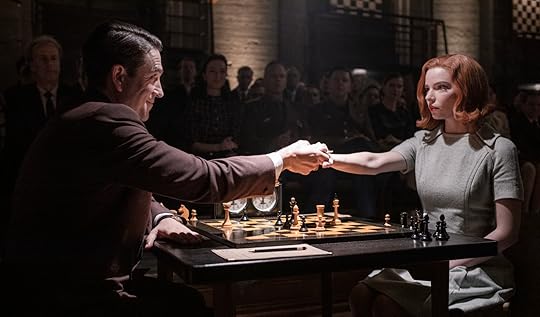 3. The Finish Line: Transformation or Tragedy
3. The Finish Line: Transformation or Tragedy
Every character arc culminates in the finish line, where the character either overcomes their flaws (positive arc), succumbs to them (negative arc), or stands firm in their beliefs while the world changes around them (flat arc).
Beth Harmon in The Queen’s Gambit offers a beautiful example of a finish line that feels earned. Beth starts her journey as a lonely, traumatized orphan with a gift for chess. As she rises through the ranks of the chess world, she battles addiction, isolation, and self-doubt. But the real triumph is not just in her chess skills—it’s in her emotional growth.
By the end of the series, Beth faces her most formidable opponent, Vasily Borgov, the world chess champion. But the true victory is when she learns to rely on others and shed the isolation she’s built around herself. She’s no longer defined by her demons.
Why it works: Beth’s arc is satisfying because it’s not just about winning the game. It’s about learning to embrace connection and overcome personal struggles, which makes her final victory feel deeply earned.
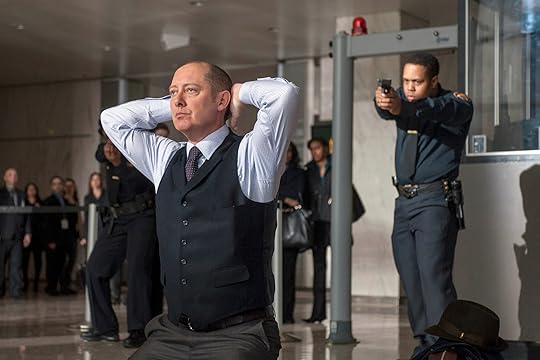 Complex Arcs – When It’s Not So Simple.
Complex Arcs – When It’s Not So Simple.
Sometimes, character arcs are more complicated than the straightforward hero’s journey. Some characters zigzag through growth and setbacks, keeping us guessing until the very end.
Raymond “Red” Reddington in The Blacklist is a fantastic example. Red starts as a criminal mastermind with a mysterious past, offering his expertise to the FBI. At first, he appears to be the villain, but as we learn more about him, we realize he’s not just a criminal—he’s also driven by a complex web of emotions, guilt, and a desire for redemption. Red’s journey is full of moral gray areas, making his arc unpredictable and fascinating.
Why it’s compelling: Red’s arc keeps us on our toes. Is he a villain or a tragic anti-hero? We’re never quite sure, but that uncertainty makes him one of TV’s most compelling characters.
Crafting a Memorable Arc.
Want to create an unforgettable character arc? Here’s a quick guide:
Throw in Challenges: Growth doesn’t happen in a vacuum. Your character needs to face obstacles—internal and external—to evolve.
Make it Personal: The more personal the stakes, the more powerful the arc. Make sure your character’s journey matters to them (and to your audience).
End with Impact: Whether they win or lose, make sure the conclusion resonates. Growth, or tragedy, should feel earned.
In Conclusion – Character arcs are more than just plot points—they’re the heart of storytelling. They make us care, make us cheer, and sometimes, make us cry. A great character arc is like a well-written letter, capturing everything we’re too afraid to say, showing us what we can become, or warning us of what we might become if we’re not careful.
Now it’s YOUR turn – What’s your favourite character arc? Who’s the hero (or anti-hero) who’s stuck with you long after the credits rolled?
Would love to get your input in the comment box below.
The post The Power of Character Arcs – From Flaws to Triumphs. appeared first on Vered Neta.
December 5, 2024
6 Golden Rules for Crafting Honest, Fun, and Kind Book & Movie Reviews.
We’ve all been there. You pour your soul into a story or film, and then BAM! A review slams into you like a wrecking ball, making you question every decision.
Let’s face it—writers, filmmakers, and artists have nerves of steel. Creating art is brave; sharing it with the world? Even braver.
But guess what? Writing reviews is its own art form. It’s like a dance: one part honesty, one part empathy, and a sprinkle of humour to keep it light.
Ready to become a reviewer who’s both insightful and kind? Let’s dive into these six golden rules with a dash of fun.
6 Golden Rules For a Great Review.

#1 – Start With Love Before You Critique.
Imagine you’re served a dish at a new restaurant. Even if it’s not perfect, there’s likely something good about it—the plating, a side dish, or the chef’s creativity.
Reviews work the same way. Start by highlighting the positives before pointing out areas for improvement.
For instance, if a book captivated you with its world-building but lost momentum halfway, lead with the praise. “The richly imagined universe pulls readers in immediately, though the pacing dips slightly in the middle chapters.” This approach respects the creator’s effort while offering constructive feedback.
Starting on a positive note builds credibility and makes the critique more palatable. Nobody wants to read—or write—a review that feels like a takedown.
 #2 – Don’t Be a Heartbreaker—Offer Constructive Criticism.
#2 – Don’t Be a Heartbreaker—Offer Constructive Criticism.
Yes, it’s okay to point out where things could improve, but do it like you would with a friend who’s trying on a bold outfit.
“Maybe the pacing dragged a bit” is way better than “I’ve seen snails move faster than this plot.”
Be specific: “The villain’s motives felt a little unclear; a stronger backstory could have added more punch.”
Boom! You’ve shown you care enough to suggest ways to make it better. And you know what? That’s gold.
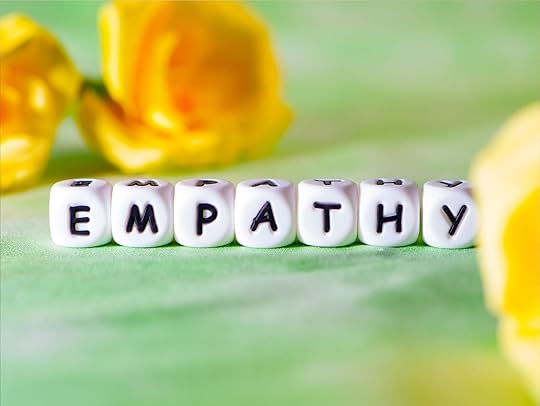
#3 – Remember the Human Behind the Work.
Every book or movie represents hours, months, even years of dedication. Behind each project is a creator who braved self-doubt, criticism, and endless revisions. Before you hit “publish” on your critique, take a moment to acknowledge this.
Even if you didn’t connect with a story, recognize the passion behind it. Say something like, “While the plot didn’t resonate with me personally, it’s clear the author poured their heart into crafting this narrative.”
Empathy goes a long way in making your review meaningful and kind.

#4 – Be the Matchmaker of Storytelling.
Think of your review as matchmaking. Maybe a movie wasn’t your style, but that doesn’t mean someone else won’t love it. Instead of outright rejection, provide context for your critique.
For example: “The humor was a bit too quirky for my taste, but fans of shows like Parks and Recreation might adore it.”
By guiding potential audiences to the right work, you’re supporting both creators and consumers.
This also fosters inclusivity in storytelling, recognizing that different perspectives and tastes enrich the creative landscape.

#5 – Sprinkle in Your Personality.
The best reviews aren’t just informative; they’re entertaining. Injecting your voice makes your critique stand out.
Whether you’re a comedian at heart or a poetic soul, let your personality infuse the review.
Use fun metaphors, vivid descriptions, or even a bit of humor:
“This book is like a cozy sweater—warm, comforting, but occasionally a little scratchy.”“Imagine Romeo and Juliet in space—minus the tragic ending.”Your unique tone not only engages readers but makes them eager to read more of your work.

#6 – Inspire, Don’t Destroy.
At the end of the day, a review is more than an opinion—it’s an invitation. You’re inviting readers to explore a story and form their own thoughts. So instead of slamming the door on something, keep it open.
Even if the ending felt rushed, did the journey there have enough charm to make it worth the read? If a character fell flat, were there others who sparkled? Celebrate the potential while being honest about the flaws.
Why Does This Matter?
Let’s get a little mushy here. Reviews are powerful. They can shape perceptions, guide decisions, and even influence careers. But they can also hurt. Kindness doesn’t mean sugarcoating—it means showing respect, empathy, and fairness.
So, the next time you’re itching to write a review, remember these golden rules. Be honest, but be kind. Critique, but constructively. Share your personality, and most importantly, inspire.
The world of storytelling is richer when we approach it with compassion and excitement. So, grab that keyboard, unleash your opinions, and make the creative world a brighter, better place.
Now it’s YOUR turn –
If you could give one piece of advice to reviewers, what would it be?
Would love to get your input in the comment box below.
The post 6 Golden Rules for Crafting Honest, Fun, and Kind Book & Movie Reviews. appeared first on Vered Neta.
November 28, 2024
10 Overlooked Films Worth Watching.
The legendary William Goldman, screenwriter of “All the President’s Men” and “Butch Cassidy and the Sundance Kid“, gave Hollywood one of its most unforgettable lines—and it wasn’t even for one of his own films: “Nobody knows anything.”
As simple as it sounds, this truth has never been more accurate than during award season.
Right now, the spotlight is on the blockbusters and the buzzy films vying for accolades. But what about those under-the-radar treasures that deserve a bit more love?
You know the ones—those films that, on paper, seemed like the next big thing, but for some mysterious reason, the crowds just didn’t show up.
When you watch them, you can’t help but scratch your head, wondering, “How did I miss this?” These films dared to do something different—whether through bold storytelling, quirky characters, or fresh perspectives—that make you think, “Why didn’t this get more attention?”
In this post, I’ll talk about more than just the shiny new releases of 2024. I’m also shining a light on some 2023 gems that flew under the radar. These films may not have hit the mainstream, but trust me—they’re totally worth your time.
Quick disclaimer: I’m not usually one for horror or extreme violence (nightmares and I don’t get along).
But hey, for you—and for my growth as a writer—I’ve ventured into all genres. There were deep breaths, a few pep talks, and a lot of courage involved, but every second was totally worth it.
So grab your popcorn and get ready—here are 10 hidden gems that you definitely shouldn’t miss!
10 Overlooked Films Worth Watching.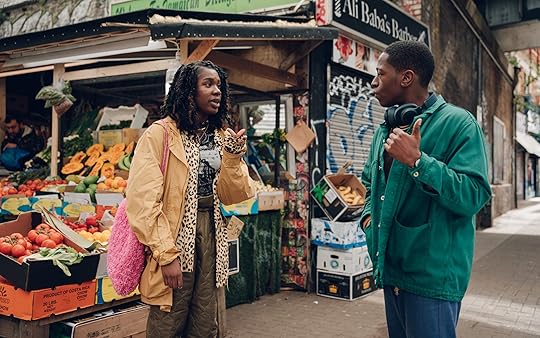 #1 – Rye Lane (2023).
#1 – Rye Lane (2023).
Who doesn’t love a good rom-com? It’s a classic genre that’s been keeping us swooning for years, but can it still feel fresh in the 2020s? “Rye Lane“ is here to prove that yes, yes it can!
This film brings a vibrant, refreshing twist to the rom-com scene. Set in South London, it follows Dom (David Jonsson) and Yas (Vivian Oparah) as they bond over heartbreak and set off on a wild, unpredictable adventure across the city.
What makes it a gem? The setting. South London isn’t just the backdrop here—it’s practically a character in itself, alive with energy and color, reflecting the emotional rollercoaster of Dom and Yas’s journey. The film’s visual style, bursting with bold colors and clever shots, makes it a rom-com that really stands out in the best way possible.
Screenwriter’s takeaway – “Rye Lane” is a masterclass in using setting as more than just a backdrop—it shapes the story and adds layers to the narrative. This film proves that even the most beloved, classic genres can be reimagined with creativity and a fresh perspective. So if you’re looking for a rom-com with a twist, this one’s for you!
 #2 – Ferrari (2024).
#2 – Ferrari (2024).
Biopics are always a hot commodity, but after the buzz around House of Gucci and Ford v Ferrari, Ferrari seemed like it might be treading familiar ground—despite its all-star cast.
Directed by Michael Mann, this isn’t your average biographical drama. It dives deep into the life of Enzo Ferrari, a man caught between financial struggles, a faltering marriage, and the high-stakes world of racing.
Adam Driver‘s portrayal of Ferrari is a revelation—raw, gripping, and filled with internal conflict. He brings the legendary figure to life, balancing his ambition with deep personal loss. The stellar performances from Penélope Cruz and Shailene Woodley further elevate the story, weaving intimate, emotional moments into the high-tension world of racing.
What makes it a gem? Is the way it blends personal drama with pulse-pounding tension. Michael Mann’s signature style—his meticulous attention to detail, sharp pacing, and atmospheric visuals—fully immerses you in the glitz and grind of 1950s Italy. This isn’t a film that just celebrates Ferrari’s successes; it takes an honest look at his flaws, portraying a man whose obsession with perfection and speed comes at a great personal cost.
Screenwriter’s takeaway – “Ferrari” is a masterclass in emotional stakes. Sure, it’s about cars and racing, but at its heart, it’s about the internal struggles that drive a person. For screenwriters, this is a powerful reminder that human conflict and vulnerability can turn a larger-than-life figure into a compelling, relatable character.
 #3 – You Hurt My Feelings (2023).
#3 – You Hurt My Feelings (2023).
Don’t you love when a movie nails that one moment or feeling you thought was yours alone? When it puts your private experiences or unspoken thoughts on-screen—only way better than you could ever articulate? That’s “You Hurt My Feelings” in a nutshell.
This sharp and insightful dramedy by Nicole Holofcener takes a microscope to trust, vulnerability, and the precarious balance of self-esteem. Julia Louis-Dreyfus shines as Beth, a writer who’s dealt a gut punch when she overhears her husband (Tobias Menzies) confess he doesn’t like her new book. What starts as a seemingly minor moment spirals into a tender, relatable exploration of relationships, self-doubt, and the delicate ecosystem of honesty.
What makes it a gem? What sets “You Hurt My Feelings” apart is its universality. Holofcener’s razor-sharp observations on human relationships are painfully relatable—everyone’s felt the sting of self-doubt or the crushing weight of a loved one’s unvarnished opinion. The humor is witty and understated, blending effortlessly with poignant emotional beats that linger long after the credits roll.
Screenwriter’s takeaway – “You Hurt My Feelings” is a masterclass in the art of subtlety. It proves that the smallest, seemingly mundane conflicts—like an offhand comment—can carry monumental emotional stakes. For screenwriters, it’s a powerful reminder that impactful stories often lie in the quiet unraveling of emotions rather than big, splashy drama.
 #4 – My Old Ass (2024).
#4 – My Old Ass (2024).
At the “ripe” age of my mid-60s, watching a movie where a 39-year-old character is labeled “My Old Ass” felt, at first, like an inside joke from the universe. Seriously?
But as I settled into the film, I realized that it wasn’t just poking fun at aging—it was a clever, unexpected take on how society perceives growing older, particularly through the lens of Gen X and Gen Z.
What started as skepticism turned into a heartfelt surprise, leaving me thinking about it long after the credits rolled.
What makes it a gem? “My Old Ass” isn’t about “old age” as much as it is about personal evolution. It challenges the idea that wisdom is reserved for older generations, showing how insights can bloom at any stage of life. The story captures the messy, vibrant, and laugh-out-loud moments of self-discovery, blending fantasy with humor in a way that feels both fresh and deeply relatable. The protagonist’s journey is packed with humor and poignancy, reminding us that life—and self-acceptance—is a work in progress at any age.
Screenwriter’s takeaway – This film is a lesson in defying storytelling conventions. With its quirky title and bold concept, “My Old Ass” proves that a movie can be outrageous, heartfelt, and wise all at once.
For screenwriters, it’s a masterclass in balancing tones—how to use humor to highlight deeper truths and how to take risks without losing the emotional core. The film’s premise of a young woman facing her older self is a brilliant device, opening the door for nonlinear storytelling that bridges past, present, and future. It’s a reminder that even the wildest ideas can resonate when grounded in genuine human experiences.

#5 – Reality (2023).
A minimalist thriller that packs a punch, “Reality” takes an unembellished, razor-sharp approach to one of the most compelling real-life stories in recent memory.
Centered on the FBI interrogation of whistleblower Reality Winner (Sydney Sweeney), the film transforms a verbatim transcript into a masterclass in tension and subtext. Who knew that a single conversation could be so gripping?
What makes it a gem? What sets “Reality” apart is its audacious simplicity. Instead of layering on dramatics, it leans entirely on the unvarnished truth—using actual dialogue from the FBI transcript. This stripped-down style creates a raw, unsettling intimacy that pulls you right into the room. Every pause, every mundane question, every slight change in tone adds to the suffocating tension. It’s storytelling at its most daring and effective
Screenwriter’s takeaway – “Reality” is proof that sometimes less is infinitely more. It shows how restraint and a focus on detail can deliver gut-wrenching intensity without a single explosion or chase scene. Dialogue and subtext become the stars here, reminding screenwriters of the incredible power in what’s not said. If you ever doubted that a quiet conversation could be the most nerve-wracking thing on screen, this movie will change your mind.
 #6 – Late Night with the Devil (2024).
#6 – Late Night with the Devil (2024).
Okay, confession time: horror and I? We’re like oil and water. My philosophy is simple—there’s enough real-life horror in the world, so why voluntarily sign up for more?
But I also know that horror has an undeniable pull (my sister and daughter are devoted fans), so with their enthusiastic guidance, I dipped my toes into “Late Night with the Devil”.
The verdict? Let’s just say my personal aversion remains firmly intact—but from a screenwriter’s lens, this film is a fascinating case study.
What makes it a gem? What makes “Late Night with the Devil” shine is its brilliant fusion of formats.
By setting a supernatural horror story in the framework of a 1970s late-night talk show, the film creates something utterly original. The retro aesthetic feels uncannily real, from the velvet-draped sets to the perfectly paced banter of the charismatic host.
As the story spirals into chaos, the film artfully blurs the line between vintage TV nostalgia and spine-chilling dread. The scares are smart, the tension is expertly paced, and the mix of psychological and supernatural elements ensures there’s a fear factor for everyone.
Screenwriter’s takeaway – This movie is a masterclass in reinventing the wheel.
The talk show format—a familiar, even comforting structure—is subverted into something deeply unsettling.
For screenwriters, it’s a reminder that innovation doesn’t always mean inventing something entirely new. Sometimes, it’s about taking what’s already known and twisting it into something unexpected and unforgettable. “Late Night with the Devil” shows how creative constraints (like a single location or a fixed format) can lead to some of the most innovative storytelling.

#7 – Monkey Man (2024).
I had to approach this one the same way I braved Kill Bill—by reframing the violence as a highly stylized, adrenaline-charged dance (a trick courtesy of my daughter). And honestly? That mindset worked wonders… until now.
Watching Kill Bill on steroids? That’s what “Monkey Man” was for me. Despite my unwavering love for Dev Patel, this is one ride I won’t be revisiting anytime soon. But, oh, what a ride it was.
What makes it a gem? “Monkey Man” starts as a pulse-pounding revenge story but quickly evolves into a rich, genre-defying exploration of trauma, redemption, and societal corruption. Patel stars as Kid, a man freshly released from prison, bent on avenging his mother’s death. But this isn’t your typical vengeance flick—it’s layered with complex themes that elevate the action into something far more meaningful.
Through breathtaking action sequences and poignant character moments, “Monkey Man” tackles the harsh realities of systemic inequality while also offering a deeply personal story of self-discovery. The journey isn’t just about justice for one person but about dismantling the larger systems of power and corruption that destroy communities. Patel’s performance is raw and electrifying, making the character’s emotional scars as impactful as his physical battles. His direction adds a unique flavor, blending gripping action with introspection and cultural nuance.
Screenwriter’s takeaway – Here’s the big lesson: even high-octane action films can have emotional resonance. “Monkey Man” proves that internal struggles can be as gripping as external conflicts, and it’s this balance that sets the film apart.
For writers, it’s a reminder to dig deeper into your characters’ psychological and emotional scars—those are what make their battles (physical or otherwise) unforgettable. Patel’s ability to weave introspection into a fast-paced revenge tale shows us how character depth can elevate even the most straightforward premise into something bold and thought-provoking.
 #8 – The Instigators (2024).
#8 – The Instigators (2024).
I’d watch Matt Damon read a phone book, so you can bet I was excited to see him in “The Instigators”!
Whether he’s leading the charge, playing wingman, or making a quick cameo, he always brings his A-game.
In this quirky crime caper, Damon teams up with Casey Affleck as two thieves on the run after a heist goes hilariously and disastrously off the rails. Oh, and did I mention their therapist, played by the brilliant Hong Chau, gets roped into the chaos? Because that’s where things get really interesting.
What makes it a gem? “The Instigators” flips the crime genre on its head with a premise that’s equal parts adrenaline and absurdity. The idea of two criminals dragging their therapist along for the ride is comedy gold, but it also opens the door for unexpectedly poignant moments. Hong Chau’s character isn’t just a tagalong—she becomes a mirror, forcing the thieves to confront their own baggage amidst all the mayhem.
The result? A perfect blend of high-stakes tension, laugh-out-loud moments, and character-driven depth. The interactions between Damon, Affleck, and Chau promise a delightful cocktail of dysfunction, dark humor, and maybe even a little redemption.
Screenwriter’s takeaway – “The Instigators” reminds us of the power of contrast in storytelling. The clash between high-octane crime and reflective therapy sessions creates a dynamic tension that keeps the audience hooked. Humor rooted in character flaws, rather than gags, elevates the comedy while making the characters feel authentic. It’s a masterclass in balancing action, humor, and heart—showing that even in a chaotic heist movie, there’s room for personal growth and vulnerability.
 #9 – Drive-Away Dolls (2024).
#9 – Drive-Away Dolls (2024).
How is this flying under the radar? Seriously, it’s an Ethan Coen movie! That name alone screams wit, chaos, and comedy gold wrapped in a thick layer of mystery. Yet, for some baffling reason, “Drive-Away Dolls” isn’t dominating award season buzz. Someone, explain this to me.
What makes it a gem? This isn’t your average road trip flick. “Drive-Away Dolls” takes the well-worn trope of a chaotic journey and flips it on its quirky head. Two women hit the road for what should be a straightforward trip, only to find themselves entangled in a series of increasingly unpredictable (and hilarious) misadventures.
With Coen’s signature comedic timing and a cast brimming with personality, the film is a wild ride filled with sharp dialogue, eccentric characters, and a refreshing dose of irreverence. It’s not just about the laughs—there’s a surprising depth in how the two leads evolve, confront their messes, and embrace life’s unpredictability.
Screenwriter’s takeaway – If you want a lesson in character-driven humor, this is your roadmap. “Drive-Away Dolls” shows how to anchor comedy in the unique dynamic between characters, blending absurdity with authentic emotional beats. The film proves that you don’t need a world-ending plot for high stakes—sometimes, the most compelling narratives are about the chaos of everyday mishaps, delivered with a wink and a twist of Coen-esque genius
 #10. The Fall Guy (2024).
#10. The Fall Guy (2024).
Out of everything on this list, The Fall Guy is the ultimate “Nobody knows anything” movie moment. William Goldman’s iconic line has never felt truer.
You’ve got Ryan Gosling and Emily Blunt, two of Hollywood’s hottest stars. Add a fun action-mystery plot, a sprinkle of romance, and a love letter to the unsung heroes of cinema—stunt performers—and somehow, it doesn’t hit all the boxes. What’s missing? Who knows! But it’s still a ride worth taking.
What makes it a gem? “The Fall Guy” doesn’t just give us action; it dives into the heart of the stunt world, celebrating the daring and often overlooked players behind movie magic. Ryan Gosling is a delight as Colt, a stuntman reluctantly thrown back into a chaotic mix of mystery and danger. The film delivers high-octane sequences paired with razor-sharp, character-driven humor. Emily Blunt shines, matching Gosling’s charm with her quick wit and magnetic presence.
What really sets this film apart is its mastery of tone. It effortlessly juggles action, comedy, and heartfelt moments without ever feeling disjointed. And let’s not forget the little surprises: a dog fluent in French (yes, really) and emotional scenes scored to Taylor Swift songs. Unexpected details like these make the film both fresh and memorable.
Screenwriter’s takeaway – The film is a textbook case of how to expertly balance diverse characters and shifting tones in a cohesive narrative. “The Fall Guy” flips genre expectations while keeping the audience invested in the characters’ journeys. It’s a reminder that even in action-heavy stories, humor and emotional beats can add depth and elevate the narrative. And, of course, that unexpected details—like a bilingual dog—can make your screenplay unforgettable.
In Conclusion – These hidden gems remind us of the magic that happens when filmmakers take risks, dive deep into their characters, and break free from conventional storytelling.
For screenwriters, they’re a treasure trove of inspiration—proof that bold choices, fresh perspectives, and creative formats can make even the most unconventional stories unforgettable. So as award season draws near, let’s celebrate those films that even if have not been a big box office success are a reminder why we love the movies.
Now it’s YOUR turn – What’s the most surprising film you’ve watched recently that went unnoticed by most audiences?
Would love to get your input in the comment box below.
The post 10 Overlooked Films Worth Watching. appeared first on Vered Neta.
November 21, 2024
Unlocking the Magic of Visuals – Essential Cinematic Tools for Screenwriters.
Screenwriting isn’t just about crafting sharp dialogue; it’s about building a world where visuals and subtext carry just as much weight as words on the page. Cinema is a medium uniquely equipped to convey emotions, themes, and narrative in ways that spoken language can’t always achieve.
In fact, sometimes it’s what we don’t say that communicates the most. By analyzing recent films, screenwriters can pick up invaluable lessons on how to leverage visuals to enhance their stories.
10 Key Elements of Cinematic Storytelling That Show How Powerful Visual Can Be.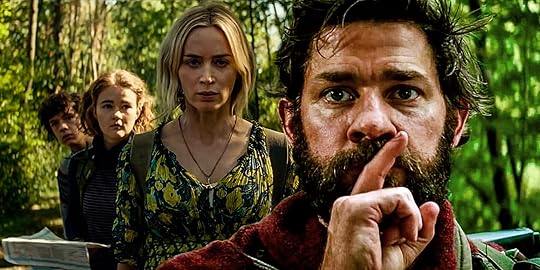 #1 – Show, Don’t Tell: The Power of Visual Subtext.
#1 – Show, Don’t Tell: The Power of Visual Subtext.
Every screenwriter has heard the adage “show, don’t tell,” and it’s one of the most important guidelines to follow.
Instead of relying on dialogue to explain a character’s emotions or motivations, let the visuals do the heavy lifting. Small, deliberate details—like a character’s posture, the use of props, or their facial expressions—can reveal so much about what’s happening internally.
Take A Quiet Place by John Krasinski. The film’s premise revolves around a world where sound is deadly, and much of the storytelling happens through silence. The audience learns the survival rules without a single word of dialogue: floorboards are marked with paint to indicate safe walking zones, meals are eaten on lettuce leaves to avoid clattering plates, and sand lines are placed to muffle footsteps.
Krasinski uses these subtle visual cues to build the world and immerse the audience in it. One of the most powerful moments comes when Evelyn (Emily Blunt) is teaching her son math on a chalkboard. The sudden sound of a monster outside causes a fleeting shift in her expression from calm to panic—an entire wave of fear conveyed without uttering a word.
Why It Works: The audience isn’t simply watching; they’re engaging, deducing meaning, and feeling more involved in the narrative.
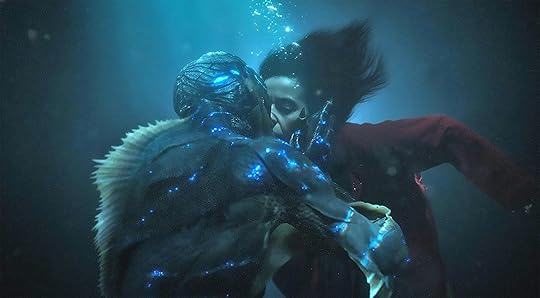 #2 – Symbolism in Visual Design.
#2 – Symbolism in Visual Design.
Film is a language of symbols, and a single object, color, or scene can hold deep meaning. By weaving subtle visual symbols into the design of the world, filmmakers convey complex themes without explicitly stating them.
For screenwriters, this means thinking about what objects or images can embody a theme or character trait.
In The Shape of Water, directed by Guillermo del Toro, water is the film’s central visual symbol. From the shimmering aquatic tank where the Amphibian Man is kept to the cascading rain that follows Elisa’s (Sally Hawkins) romantic journey, water symbolizes transformation, connection, and liberation. Each visual element of water builds the thematic heart of the film, subtly reflecting the characters’ desires for freedom and understanding.
Why It Works: When symbolism is used thoughtfully, it gives the audience something to decode and interpret, enriching the overall experience.
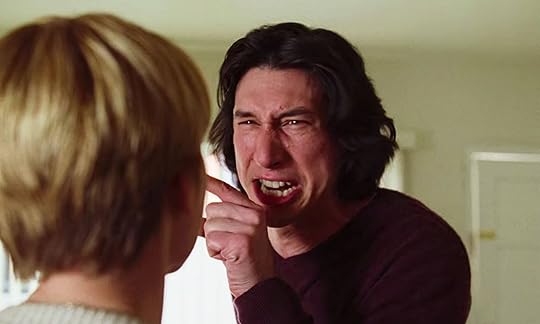 #3 – Emotion Through Framing and Composition.
#3 – Emotion Through Framing and Composition.
Framing and composition are tools that allow directors to direct the audience’s emotions without saying a word.
A tight shot can create claustrophobia; a wide shot can emphasize isolation or freedom. Screenwriters can suggest such moments in their scripts by including visual cues that naturally lead to powerful compositions.
Consider Marriage Story, where Noah Baumbach uses tight framing to accentuate the emotional constriction of a couple’s arguments. These confined shots are juxtaposed with wide frames, showing Charlie (Adam Driver) and Nicole (Scarlett Johansson) apart, emphasizing the emotional distance growing between them. This visual approach elevates the emotional resonance of the dialogue.
Why It Works: The composition of a shot guides the viewer’s emotional response, enhancing the overall impact of the scene.
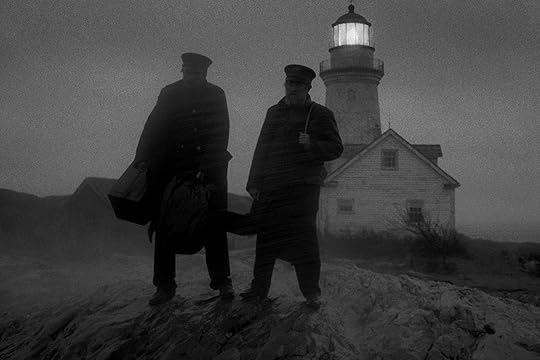
#4 – Lighting as a Storytelling Tool.
Lighting isn’t just about making things visible; it’s a narrative device in itself.
How a scene is lit can establish mood, reflect character states, and even foreshadow events. For screenwriters, suggesting specific lighting can subtly inform the emotional undercurrent of a scene.
A brilliant example is The Lighthouse, directed by Robert Eggers. The film is shot in stark black-and-white, and the lighting contrasts are extreme. This lighting serves not only to create an atmosphere of isolation and madness but also to emphasize the supernatural elements at play. The interplay of light and dark becomes an emotional landscape, mirroring the unraveling minds of the two protagonists.
Why It Works: Lighting controls tone and mood, allowing filmmakers to convey feelings or foreshadow events through shadow and light, even without the need for dialogue.
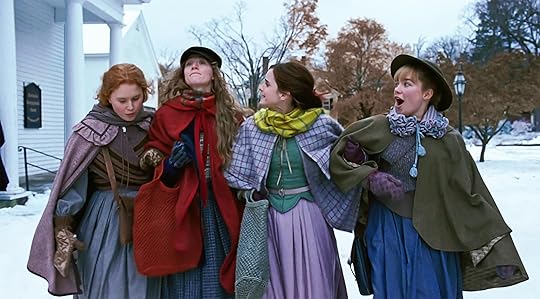
#5 – The Role of Costumes in Character Development.
Costumes are like visual shorthand for a character’s personality, desires, and personal journey.
A character’s wardrobe can signal their socio-economic status, personal struggles, or even their emotional transformation throughout the film. Screenwriters can use costume cues in their scripts to enhance character development.
In Little Women, directed by Greta Gerwig, the costumes play a pivotal role in defining each sister’s character. Jo (Saoirse Ronan) dresses in practical, loose-fitting clothes, symbolizing her independence and rejection of traditional gender roles. Amy (Florence Pugh) wears elegant gowns, reflecting her desire for refinement and societal status. As the story unfolds, these costumes evolve, highlighting the characters’ growth and changing aspirations.
Why It Works: Costumes visually communicate what words cannot, and by subtly incorporating them into the script, screenwriters can enrich their characters’ arcs.
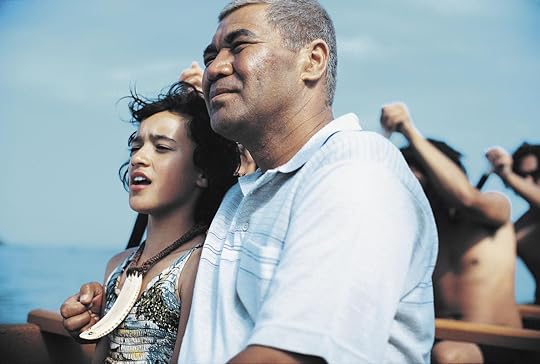 #6 – Action Without Words.
#6 – Action Without Words.
Sometimes, actions speak louder than words. Action without dialogue allows characters to communicate their inner world through movement, expressions, or physical gestures.
These moments often capture the emotional core of a character’s journey in ways that dialogue cannot.
In Whale Rider, Pai’s (Keisha Castle-Hughes) journey is largely expressed through action rather than words. One of the most powerful moments is when Pai climbs a sacred rock, standing at the ocean’s edge, her stance and gaze conveying determination and inner strength. The absence of dialogue amplifies the emotional impact, allowing the audience to feel Pai’s growth without a single line of spoken dialogue.
Why It Works: These moments allow the audience to witness a character’s transformation in its purest, most visceral form.
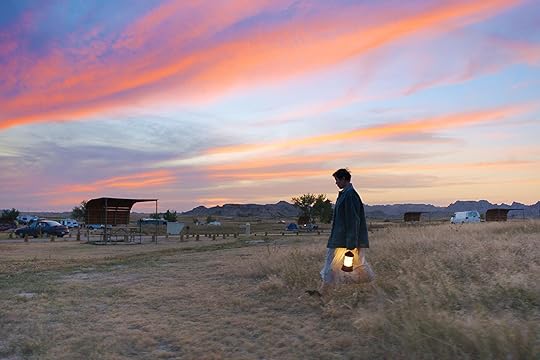
#7 – The Power of a Static Shot.
A static shot holds the camera still and allows the scene to breathe. These shots can evoke contemplation, emotional depth, or a sense of isolation.
They slow the pace of the story, creating a moment for the audience to engage with the characters and their surroundings deeply.
In Nomadland, Chloé Zhao uses static wide shots of barren landscapes, emphasizing the loneliness and isolation of Fern (Frances McDormand). These shots not only reflect Fern’s emotional journey but also convey the enormity of the world she inhabits. The stillness of the shot forces the audience to absorb the emotional weight of her solitude.
Why It Works: A static shot lets the emotional and thematic elements unfold slowly, allowing the audience to absorb the depth of the moment.
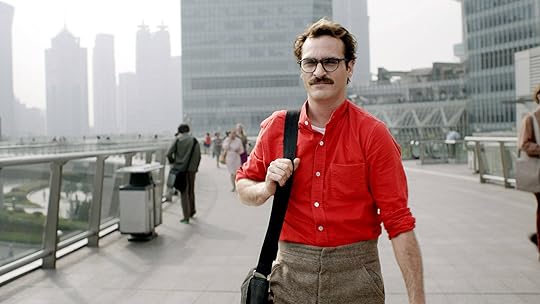 #8 – Environmental Storytelling.
#8 – Environmental Storytelling.
The environment is more than just a backdrop; it actively communicates the story. How characters interact with their surroundings, or how those environments reflect their inner world, can reveal layers of narrative without a word being spoken.
In Her, directed by Spike Jonze, the city of Los Angeles serves as a reflection of Theodore’s (Joaquin Phoenix) internal isolation.
The sleek, pastel-colored buildings contrast sharply with his emotional detachment, subtly reinforcing the film’s exploration of loneliness in a hyper-connected world.
Why It Works: The environment itself becomes an active storyteller, providing context, emotional depth, and symbolism to the narrative.
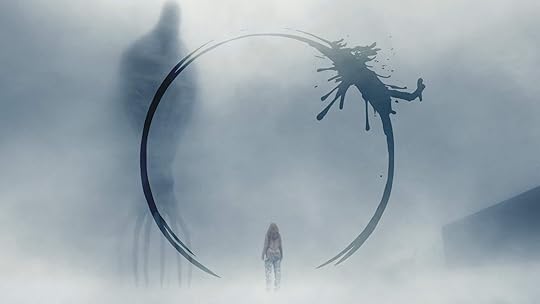 #9 – Visual Foreshadowing.
#9 – Visual Foreshadowing.
Visual foreshadowing plants clues in the scene that hint at future events. These visual cues can be overt or subtle but serve to build anticipation and deepen the narrative.
For screenwriters, adding these visual cues strengthens the cohesion of the story.
In Arrival, directed by Denis Villeneuve, the circular symbols of the Heptapod language visually foreshadow the film’s twist about non-linear time. The circular shapes allude to the concept of time being experienced simultaneously, preparing the audience for the revelation that will reshape their understanding of the film’s timeline.
Why It Works: Foreshadowing builds suspense and creates a sense of inevitability, making the eventual revelation more satisfying.
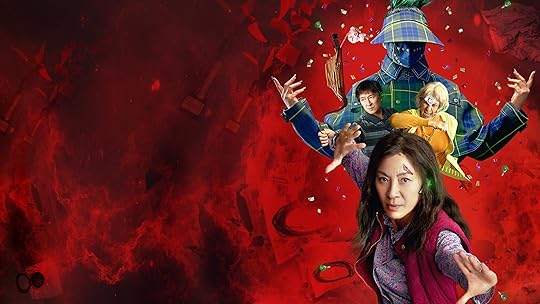 #10. Montage for Condensed Storytelling.
#10. Montage for Condensed Storytelling.
A montage is a powerful tool for condensing time or presenting multiple ideas in a compact space.
It’s the ultimate way to convey a lot of information or emotion quickly, often accompanied by music to heighten its impact.
In Everything Everywhere All at Once, the multiverse jumping montage is a fast-paced whirlwind of alternate realities, capturing the chaotic yet transformative nature of Evelyn’s (Michelle Yeoh) journey. Through rapid cuts, we see her as a chef, a movie star, and countless other versions of herself, each snapshot representing a different possibility and emotional shift.
Why It Works: Montages allow filmmakers to quickly compress time or present various ideas without losing the emotional core of the story.
In Conclusion – Screenwriting is more than just putting words on a page—it’s about crafting a vibrant world where visuals, atmosphere, and tiny details bring the story to life. When you tap into the magic of visual storytelling, you unlock a whole new layer of your script, letting emotions, themes, and character journeys unfold naturally.
Whether it’s a meaningful object, a frame that tugs at the heart, or a subtle hint of what’s to come, every visual choice can amplify your story, making it richer, more engaging, and totally unforgettable.
Now it’s YOUR turn – Which recent film do you think uses visual storytelling in the most unique way?
Would love to get your input in the comment box below.
The post Unlocking the Magic of Visuals – Essential Cinematic Tools for Screenwriters. appeared first on Vered Neta.
November 15, 2024
Is “Nobody Wants This” the Rom-Com Binge You’ve Been Waiting For?
Creator: Erin Foster
Writer: Erin Foster & More
Starring: Kristen Bell, Adam Brody, Justine Lupe
Tagline: “A Shiksa Walks Into a Temple“
Trivia: Originally titled “Shiksa”, which is also the last word said in the first episode.
 A few weeks ago, I wrote about creating realistic romance between characters without veering into cheesy territory.
A few weeks ago, I wrote about creating realistic romance between characters without veering into cheesy territory.
Lo and behold, Netflix delivered Nobody Wants This, a rom-com series that almost seems like it’s answering my blog post in real time!
It’s as if Netflix read my advice (before I even wrote it!) and decided to give us a fun, if imperfect, example of what it looks like to create a love story full of endearing (and occasionally cringeworthy) moments. Amid today’s TV landscape, crammed with intense dramas and dystopian sagas, Nobody Wants This offers a refreshing throwback to classic rom-com charm.
Following the unlikely romance between Joanne (Kristen Bell), a bold, blunt podcaster, and Noah (Adam Brody), a thoughtful, progressive rabbi, the show embraces classic rom-com tropes with a modern twist. Watching it brought me back to movies like Keeping the Faith, where Ben Stiller’s rabbi character also finds himself grappling with love, humor, and tradition.
Why “ Nobody Wants This” Feels Like a Rom-Com Love Letter. Nobody Wants This is full of those signature rom-com elements we know and love—awkward first meetings, cute misunderstandings, and the inevitable family tension that comes from mixing two very different lives.
Nobody Wants This is full of those signature rom-com elements we know and love—awkward first meetings, cute misunderstandings, and the inevitable family tension that comes from mixing two very different lives.
The series revels in the charming discomfort of Joanne and Noah fumbling through each other’s worlds.
Joanne, with her bold sense of humor and a tendency to say exactly what’s on her mind, is the exact opposite of Noah, whose background and profession demand diplomacy and thoughtfulness. Watching them navigate their differences offers that feel-good predictability that defines the genre.
Bell and Brody have great chemistry, which is half the magic of the show. Their easygoing charm as they navigate cross-cultural mishaps and dating “ick” moments gives the story a sweetness that is hard to resist.
For writers, this is an important reminder: character chemistry matters just as much as plot in a romance. Bell and Brody bring a natural, relatable spark to their scenes, elevating some of the more predictable scenarios. If anything, they show us that who you cast is as crucial as what happens.
When Predictable Becomes a Bit Too Predictable. While the show nails many rom-com basics, it also stumbles in ways that writers can learn from.
While the show nails many rom-com basics, it also stumbles in ways that writers can learn from.
For starters, Nobody Wants This relies a bit too heavily on rom-com cliches, which can make the storyline feel overly familiar.
Joanne’s mishap bringing a pork dish to Noah’s Jewish family, or the classic “overprotective Jewish mother” stereotype, are cute, but they’re also predictable—and sometimes overdone.
It’s a reminder for writers to balance nostalgia with originality, finding fresh ways to show classic scenarios so they don’t feel too obvious or tired.
Another pitfall is the way the show drags its story over a full season.
Don’t get me wrong—I love a binge-worthy series as much as anyone, but this plot felt more suited to a movie. At times, it seemed like the series was padding for time, and while the humor was mostly on point, the story’s emotional weight could have been better served in a more concise format.
A takeaway for writers here is that sometimes less is more. Stretching a story out can dilute its impact, especially when it’s meant to be light and engaging.
When Stereotypes Go From Cute to Cringe.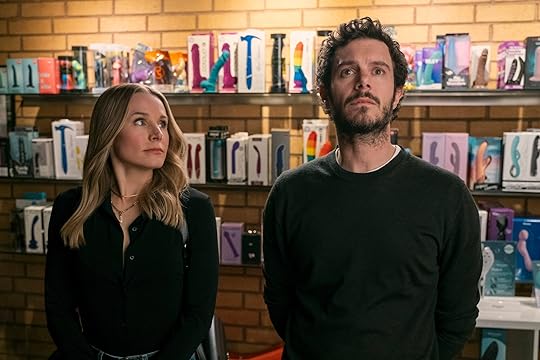 Then there’s the humor around cultural differences, which occasionally misses the mark.
Then there’s the humor around cultural differences, which occasionally misses the mark.
The Jewish characters, particularly the women, are portrayed with a bit too much stereotype and not enough depth. Joanne may have all the “main character” relatability, but the female Jewish characters end up as caricatures.
Especially now, with rising concerns about antisemitism, it’s important for creators to offer nuanced portrayals, especially of groups that might already face oversimplification in media.
For screenwriters, this can be a reminder to dig a bit deeper into characters and challenge stereotypes—even in rom-coms. Viewers appreciate humor, but we also love characters with dimension, who feel real and relatable beyond just “the nagging mother” or “the opinionated sister.”
The Verdict: A Binge-Worthy Throwback with All the Classic Flaws
For all its flaws, Nobody Wants This is a welcome break from the usual dark and heavy fare.
It’s a series that embraces the nostalgic charm of classic rom-coms while updating the formula for a modern audience (and maybe even poking fun at itself in the process). It might not reinvent the genre, but it’s like slipping into your favorite comfy sweater. Sometimes, that’s exactly what we need.
If you’re a writer, watch Nobody Wants This not just for the laughs and romance, but for the lessons.
Notice the chemistry that keeps us hooked even when the plot gets predictable.
Take note of how stretched plots can water down impact, and remember that depth can only improve a story—even in a rom-com.
So grab some popcorn, press play, and let this modern rom-com remind you why we love to watch people fall in love (and occasionally embarrass themselves) on screen.
Verdict – 4/5 Stars in my book
The post Is “Nobody Wants This” the Rom-Com Binge You’ve Been Waiting For? appeared first on Vered Neta.
November 7, 2024
How to Craft a Memorable Theme.
Have you ever watched a movie or read a book and felt like it spoke to your soul? That’s not just movie magic or literary wizardry; it’s the theme doing its job.
Theme is the message, the beating heart of your story, the truth you want to share with the world—or at least the truth your characters are grappling with. But don’t worry, crafting a strong theme doesn’t require a degree in philosophy.
Let’s break down the 7 key elements that make your theme unforgettable.
7 Key Elements That Make Your Theme Unforgettable. #1 – Start with a Big, Juicy Question.
#1 – Start with a Big, Juicy Question.
Every great theme starts with a question that keeps people up at night.
Think: What does it mean to be human? Can money really buy happiness? Is love worth the risk of heartbreak? Your story will explore this question in all its messy, complicated glory. It’s like a compass guiding your plot and characters.
Take Blade Runner 2049. The film asks: What does it mean to be human? K, a replicant, wrestles with questions about identity and worth, especially when he starts to think he might be something… more.
This central question keeps viewers hooked, challenging them to think about consciousness, personhood, and what makes life meaningful—all wrapped up in a gorgeously dystopian sci-fi package.
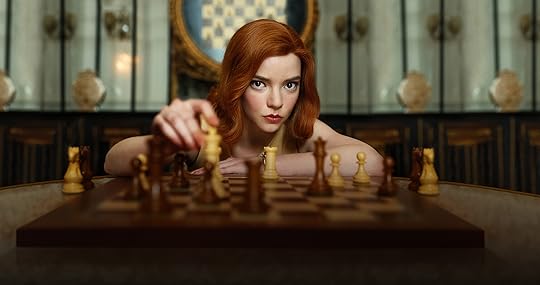 #2 – Make Your Characters Live and Breathe the Theme.
#2 – Make Your Characters Live and Breathe the Theme.
Your theme isn’t just a message tacked onto the story. It should flow through your characters’ veins.
Your protagonist’s journey—how they change, what they learn—should reflect your theme.
They might start out believing one thing and, through some trials and tribulations, realize they were way off. Or maybe the world forces them to evolve, and they fight it kicking and screaming.
In The Queen’s Gambit, Beth Harmon isn’t just a chess prodigy. She’s a young woman dealing with trauma, addiction, and the pressures of her own brilliance.
The theme of battling personal demons and the price of genius unfolds as she conquers the male-dominated chess world—and herself. Beth’s arc is a beautiful, broken, triumphant mess, and we love it.
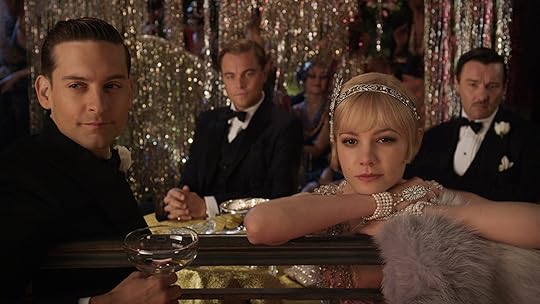
#3 – Use Symbols and Motifs Like a Boss.
Have you ever noticed how some stories use objects or images that pop up repeatedly, making you feel something deeper?
Those are symbols and motifs, and they’re like your theme’s secret agents, quietly driving the message home.
The Great Gatsby (2013 movie adaptation) brings the green light at the end of Daisy’s dock into vivid focus.
That green light represents Gatsby’s unreachable dreams and the hollow promise of the American Dream. It’s always there, glowing in the distance, teasing Gatsby and reminding us that wealth and success might not be the golden tickets they seem. Every time we see it, we feel the ache of Gatsby’s impossible longing.
 #4 – Crank Up the Conflict.
#4 – Crank Up the Conflict.
Conflict isn’t just fun; it’s essential for showing your theme in action.
Throw your characters into the fire, put their beliefs to the test, and watch how they change or fight for what they believe in.
The more intense the clash, the clearer your theme becomes.
In Black Panther, T’Challa’s conflict with Killmonger isn’t just an epic superhero showdown. It’s a battle of ideologies, exploring themes of legacy, responsibility, and the right way to use power.
T’Challa wants to preserve his father’s traditions, while Killmonger, with his radical vision, forces T’Challa to reconsider Wakanda’s place in the world. Their fight makes the theme pulse with urgency, leaving us thinking about what’s truly worth fighting for.

#5 – Show, Don’t Preach.
Nobody likes to be lectured. Themes should be felt, not just told. Let your characters’ actions, struggles, and moments of vulnerability show the theme.
If you spell everything out, you risk making your story feel like a PowerPoint presentation. Keep it subtle and trust your audience to get it.
Parasite never screams, “This movie is about class inequality!” Instead, it shows us through the Kim family’s cramped, semi-basement apartment and the Park family’s mansion, through the visual language of stairs and the flood that devastates the Kims while barely inconveniencing the Parks.
The theme emerges organically, and by the end, you’re thinking about economic divides without even realizing you’ve been given a masterclass in social commentary.

#6 – Let the Setting Do Some Heavy Lifting.
The setting isn’t just where stuff happens; it can reinforce your theme and make your story more immersive.
Think about how your world reflects your characters’ struggles or the messages you’re exploring.
A dystopian wasteland might highlight themes of survival and desolation, while a lush, vibrant city could explore ambition and excess.
In Mad Max: Fury Road, the desert setting is as brutal and unforgiving as the film’s theme: the fight for survival in a world stripped of humanity. Resources are scarce, and power is in the hands of warlords.
This harsh landscape makes every chase and every struggle feel more intense, underscoring the themes of environmental collapse and human desperation. By the end, we’re thirsty, exhausted, and fully immersed in the story’s message.
 #7 – Embrace Ambiguity and Let Your Theme Evolve.
#7 – Embrace Ambiguity and Let Your Theme Evolve.
Themes can be complicated, just like real life. Sometimes, your story’s theme might evolve as your characters make hard choices or learn difficult truths. And hey, ambiguity can be your friend.
Audiences don’t need all the answers wrapped up with a bow; sometimes, it’s more powerful to leave them thinking.
The Joker explores themes of mental illness and societal neglect. Arthur Fleck’s descent into madness isn’t simply about personal failure; it’s about a society that chews up and spits out the vulnerable.
The film doesn’t give easy answers or excuses for Arthur’s actions, making the theme even more unsettling. The ambiguity leaves us debating what society’s role is in the creation of people like Joker, making the theme linger long after the credits roll.
In Conclusion – So, there you have it—seven essential elements to help you craft a theme that will resonate, haunt, or inspire your audience. Remember, theme isn’t just an afterthought; it’s what gives your story depth, meaning, and the ability to connect with people on a whole other level.
Use these tools, watch your favorite movies, and read your favorite books to see how the pros do it. Then go write your own masterpiece with a theme that packs a punch.
Happy writing!
Now it’s YOUR turn – What’s a theme in a book or movie that stuck with you long after finishing it, and why?
Would love to get your input in the comment box below.
The post How to Craft a Memorable Theme. appeared first on Vered Neta.



